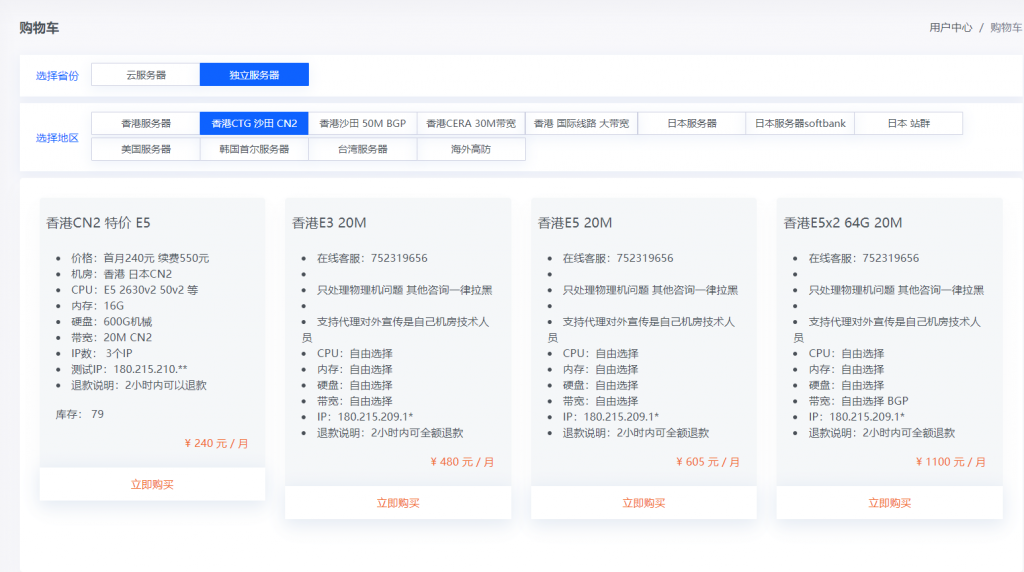methodwww.cfjingling.com
www.cfjingling.com 时间:2021-05-08 阅读:()
RESEARCHOpenAccessHousinginequalityinurbanChina:theheritageofsocialistinstitutionalarrangementsChangchunFang1*andJohnIceland2*Correspondence:njuccf@nju.
edu.
cn1DepartmentofSociology,NanjingUniversity,168,XianlinAvenue,Nanjing210023,ChinaFulllistofauthorinformationisavailableattheendofthearticleAbstractWiththedevelopmentofthemarketeconomyinChina,doestheeffectoftheoriginalsocialistinstitutionalarrangementsonsocialinequalityfadeWeexaminethisissuebyconsideringtheeffectofpeople'spositionsintheworkunitsystemandtheirsocioeconomicstatusonpatternsofhousinginequalityinurbanChina.
Usingindividual-leveldatafromthe2007HouseholdSurveyontheHousingConditionsofUrbanResidentsinNanjing,China,wefindthatalthoughpeople'ssocioeconomicstatus(measuredbyhouseholdincomeandhouseholder'seducation)hasbecomeveryimportantinshapingpeople'shousingoutcomesinurbanChina,housinginequalityisalsodeterminedtosomeextentbytheirpositionintheworkunitsystem—suchasbeingemployedinvariousunitswithinthestatesector—beforeandduringthehousingreformprocess.
ThepatternofhousinginequalityinurbanChinaindicatesthattheimpactofsocialistinstitutionalarrangementsonsocialinequalitycanstillbefoundinmarkettransitionsocietiesevenyearsafterthemarkettransitionhasoccurred.
Keywords:Housinginequality,Socialistinstitutionalarrangements,Workunitsystem,China,MarkettransitionIntroductionInsocialistsocieties,socialinequalityisstructuredinlargepartbygovernment-managedredistributivemechanisms(Szelenyi1978).
Duringtheperiodoftheplannedeconomy,theworkunit(danwei)systemplayedanimportantroleintheredistributionofresourcesinurbanChina.
Itwasthefoundationofurbanmanagementandthebasisforadistinctlysocialiststrategyofgovernance(Bray2005).
Workunitsprovidednotonlyjobsandearn-ingsbutalsoawidearrayofgoodsandservicesforemployeesandtheirfamilies(Bian1994).
Ingeneral,workunitsinChinacouldbedividedintofourmajorgroupings:(1)theprivatesector,(2)thecollectivesector,(3)stateenterprises,and(4)stateinstitutesandagencies(LinandBian1991).
Theworkunitsystemwasahierarchicalsystem,since"theresourcesthataworkunitcouldoffertoitsemployeeswerecontingentuponitsstruc-turalpositioninthesocialisthierarchy"(WuandXie2003).
Duringtheperiodoftheplannedeconomy,stateinstitutesandagenciesandstateenterprises(bothofwhicharestateowned)usuallyreceivedpriorityinresourceallocations.
Stateemployeesandtheirfamiliesweretypicallyadvantagednotonlyintermsofsalary,butalsohousing,children'sTheJournalofChineseSociologyTheAuthor(s).
2018OpenAccessThisarticleisdistributedunderthetermsoftheCreativeCommonsAttribution4.
0InternationalLicense(http://creativecommons.
org/licenses/by/4.
0/),whichpermitsunrestricteduse,distribution,andreproductioninanymedium,providedyougiveappropriatecredittotheoriginalauthor(s)andthesource,providealinktotheCreativeCommonslicense,andindicateifchangesweremade.
FangandIcelandTheJournalofChineseSociology(2018)5:12https://doi.
org/10.
1186/s40711-018-0082-9schooling,healthcare,pensions,andevenaccesstocommercialservices(Bian1994;LinandBian1991;LuandPerry1997;Walder1988;XieandWu2008).
Withthedevelopmentofthemarketeconomyinmarkettransitioncountries,hasthepowerofthishierarchyfadedinshapingpatternsofinequalityOrdoesitstillexertapowerfulforceSomeresearchershavearguedthatmarket-orientedreformshaveweak-enedredistributiveeffortsandchangedtheopportunitystructure(Nee1989).
However,othershavearguedthatformerinstitutionalarrangements,includingtheworkunitsysteminmarkettransitioncountries,havehadalastingeffectonthenatureandcontoursofin-equality(BianandLogan1996;Lin1995;Oi1992;ParishandMichelson1996;Rona-Tas1994;Walder1995).
Mostofthesestudieswereconductedinthe1990s,andsincethestartofthetwenty-firstcentury,thesituationofChinahaschanged.
Forexample,reformsofstate-ownedenterprisesinthelate1990shavehadfar-reachingeffects,suchaselimin-atinglifelongtenureforworkersinstate-ownedenterprises.
Inaddition,themannerinwhichmostwelfarebenefitsandrelatedservicesaredelivered,includingtheprovisionofhousingbytheworkunit,hasbeenreformed,suchthattheseservicesarenowprovidedtoagreaterdegreebythemarketorothersocialorganizations(Gu2001;Lee2000;Wangetal.
2005).
Thus,theprivatesectorhasexpandeddramatically.
Thesetrendsleadustoaskthefollowingtwoquestionsthatguideouranalysis:dosocialistinstitutionalarrangements,intheformofahousehold'sworkunit,stillaffectthekindofhousingtowhichpeoplehaveaccessAnd,giventhegrowthofthemarketsystemandtheprivatesector,doessocioeconomicstatus(consistingofincomeandeducation)haveanimportanteffectonhousingoutcomestodayTogaininsightintothisissue,weexaminetheeffectofthesetwofactors—ahousehold'spositionintheso-cialistsystemanditssocioeconomicstatus—onpatternsofhousinginequalityinurbanChina.
Specifically,usingindividual-leveldatafromthe2007HouseholdSurveyontheHousingConditionsofUrbanResidentsinNanjing,China,weinvestigatetheassoci-ationbetweenhomeownershipstatus,thetypeofhousinginwhichahouseholdlives,andhousingquality(sizeofunit)—ourthreedependentvariables—andahousehold'sworkunitstatus(suchasbeingemployedbythegovernment/partyorganizationorbytheprivatesector)andsocioeconomicstatus.
Thisstudycontributestotheliteratureinthreeways:(1)previousstudiesoftheef-fectsofthemarkettransformationonhouseholdsinChinahavepaidmoreattentiontothepersistenteffectsofsocialistinstitutionalarrangementsonpeople'sincomesratherthanonhousingoutcomes,inpartbecausedataonthelatterhavenotbeenasreadilyavailable(HuangandJiang2009);(2)previousstudiesconcernedwithhousinginequal-ityinChinafocusedmainlyonpeople'shousingsituationatthebeginningstageofChina'shousingprivatizationreforms,andlesssoaftertheirfullimplementation.
Anewanalysisismuchneeded,giventhelikelylong-termeffectofthesefar-reachingre-forms;and(3)wefocusonmorehousingoutcomes(tenure,typeofhousing,andqual-ityofhousing)thanmostpreviousstudies.
LiteraturereviewandresearchhypothesesMarketreformsandgrowinginequalityIncomeinequalityhascontinuedtoincreaseinmanycountriesinrecentyears,andithasalsobeenmuchmoreconspicuousinpost-socialistcountries—suchasinCentralFangandIcelandTheJournalofChineseSociology(2018)5:12Page2of19andEasternEurope—sincethe1990s(MitraandYemtsov2007).
Itseemslikelythatmarket-orientedreformshavecontributedtotheseincreasesinincomeinequality.
AsforChina,incomeinequalityhasincreasedcontinuouslyintandemwithmarket-ori-entedreforms(UNU-WIDER2008).
Inearly2013,thedirectorofChina'sNationalBur-eauofStatisticsannouncedthatChina'sGinicoefficienthadreached0.
47(Zhou2013)andotherscholarsestimatethattheGinicoefficientisactuallyhigherthanthis(Wang2010;Wang2013).
Market-orientedreformshavealsoaffectedhousingqualityanddistribution.
Ontheonehand,theresidentialconditionsofChina'surbaninhabitantshaveimprovedsignifi-cantlysincetheimplementationofhousingreforms.
Thepercapitausablefloorspaceforurbanresidentswas6.
7m2in1978,increasingto32.
7m2in2011(NationalBureauofStatisticsofChina2012).
Ontheotherhand,thereisconsiderableconcernthattheseim-provementshavenotbeensharedequally.
Sato'sanalysisondatacollectedintheChinaHouseholdIncomeProject(CHIP2002andCHIP2007)showsthatpercapitahousingwealthforregisteredurbanresidentswas4.
5timesthatforruralresidentsin2002,whileby2007,thisratiohadincreasedto7.
2.
Thus,theGinicoefficientofhouseholdhousingwealthincreasedfrom0.
63in2002to0.
67in2007(Satoetal.
2013).
Relatedstudieshavealsoconfirmedthathousinginequalitybothreflectsandhasexacerbatedbroadereco-nomicinequalities(Chenetal.
2008;HuangandJiang2009;Li2002;Xin2007;Yeetal.
2010)andsocialproblemscausedbyhousinginequality,suchasresidentialsegregation(FengandZhou2008;HuangandJiang2009;LIetal.
2004;Liaoetal.
2012;ShenandQiu2008;YangandWang2010)andurbanpoverty(Wang2000).
DeterminantsofhousinginequalityHousinginequalityisanimportantaspectofsocialinequalityinmodernsocieties,andhousingtenure(ownership)isoftenusedasmeasureofhousingattainment(Bell1977;DrudyandPunch2002;Elmelech2004;Luxetal.
2013;OsbornandMorris1979;RexandMoore1969).
HowthendoeshousinginequalityemergePerspectivesoftenusedinstudiesofwesternmarketeconomiesfocusontheimportanceofsocioeconomic(SES)anddemographicfactors.
Homeownershipisaformofconsumptionandinvest-ment,suchthathousingtenurecanbeexplainedbyvariablesmeasuringthedifferenceinpeople'sSES,housingmarketcharacteristics,andhousingprices(Clarketal.
1994;Clarketal.
1997;HendersonandIoannides1989).
Inaddition,familysize,familystruc-ture,andlifecyclefactorsmightalsoaffecthousingattainment.
Incontrasttothefunctioningofmarketeconomies,inChina,people'shousingout-comesweredeterminedbysocialistinstitutionalarrangementsduringtheperiodoftheplannedeconomy,andtheworkunitsystemwasanimportantpartofthisarrange-ment.
Intheperiodbeforemarketreforms,mosturbanhousinginChinawascon-structedthroughcapitalinvestmentfundschanneledbythestatedirectlytostate-ownedworkunitsorlocalgovernments(Bray2005),andthenallocatedtoem-ployeesbyworkunitorlocalgovernment.
Duringthatperiod,overalllevelsofhousinginequalityweremodest,ashousingwasseenasafundamentalrightforurbanworkers.
However,thisdoesnotmeanthathousinginequalitywasnonexistent.
Housingalloca-tionsweredeterminedmainlybynationalpolicies(Huang2003)whichtookintoac-countpeople'scurrenthousingcondition,familysize,seniority,partymembership,levelFangandIcelandTheJournalofChineseSociology(2018)5:12Page3of19ofposition,andprofessionaltitle,tonameafewimportantfactors(Bianetal.
1996;Loganetal.
2009;Loganetal.
1999).
Ofkeyimportanceisthatone'sworkunitplayedacriticalroleinthedistributionofhousing,sincehousingwasallocatedmainlybytheworkunit.
Accordingtothefirstnationalsurveyofhousingstockin323citiesin1985,work-unithousingcomprised75%oftotalhousing,whilehousingmanagedbythemu-nicipalhousingbureaucomprisedonly9%ofthetotal(Wu1996).
Becausetheworkunitplayedalargeroleintheprovisionandallocationofhousing,thedifferencebe-tweenworkunits,suchasthenature,size,andtheadministrativeleveloftheworkunit,undoubtedlyinfluencedpeople'shousingconditions.
HousingreformsinChinastartedatthebeginningofthe1980sandextendedthroughthe1990s.
Thesereformsgenerallychangedtheresponsibilityforattaininghousingfromthestatetotheindividualinordertoreducethegovernment'sfinancialburden,suchasbyraisingtherentofpublicrentalhousing.
Thefinalsetofreforms,imple-mentedbeginningin1998,andthecorecontentofthiswaveofreforms,wastostopthehousingallocationprocessbysellingallhousingownedbyworkunitsandlocalgovernmentsanddevelopingtheprivatehousingmarket[seealsoBray2005].
ThiswaveofreformsinChinawassimilartoreformsadoptedinCentralandEasternEuropeandproceededontwotracks:privatizationofpublichousinganddevelopmentofanewprivatehousingsector(Loganetal.
2010).
Thesetwotrackshavebeende-scribedas"dualmarkets,"astheyinvolvedtheinternal(state-controlled)marketandanewopenmarket(Sato2006;Shiming1998).
Intheinternalmarket,publichousesweresoldatadiscountedprice;thesepracticesweretypicallywidespreadduringthefirststageofhousingreformsinmosttransitionalcountries.
Forexample,astudyofhousinginBudapestshowedthatin1990,35%ofthetotalhousingstockwassoldtotheiroriginaltenantsatadiscountof35–40%(HegedüsandTosics1994).
Becauseoftheexistenceoftheinternalmarket,people'shousingsituationsdependnotonlyontheirincomeandrelatedresourcesbutalso—andinfactmostly—ontheirpositioninthepre-reformsystem(Loganetal.
2010).
StudiesonCentralandEasternEuropeindicatethatpeopleinimportantgovernmentpositionsinthepre-reformsystemhadtheopportunitytobuyhigh-qualitypublichousingataverylowprice(KosarevaandStruyk1993;Pickvance2010).
Thisinitialprocessofhousingprivatizationinmostpost-socialistcountries,suchasRussia,Serbia,andPoland(Yemtsov2007),hasthusbeentermedbysomeas"give-awayprivatization,"apolicythataggravatedthelevelofhousinginequalitythatwasalreadypresenttosomedegreeduringthesocialistperiod(Buckleyetal.
1995;Luxetal.
2013).
ThepracticesinCentralandEasternEurope,tovaryingextents,illustratethelinger-ingeffectsofsocialistinstitutionalarrangementsandhighlighttheimportanceofpathdependency.
AsforChina,duringtheprocessoftheprivatizationofpublichousing,se-niority,partymembership,levelofposition,andprofessionaltitleallhelpedprivilegedpeopleobtaindiscountedhousing(seeSato2006).
Theimpactoftheworkunitsysteminparticularonhousingprivatizationwasalsoverystrong.
Intheinternalmarket,theworkunitsoldthehousingitcontrolledtoitsemployees.
Theamountofhousingtheworkunithadatitsdisposalwasusuallydeterminedbytheworkunit'sadministrativerankandtheroleitplayedinnationaleconomicandsocialdevelopment.
Asaresult,housinginequalityaroseacrossgroupsofpeoplewhowereemployedindifferentworkunits.
Inaddition,market-orientedreformsinitiatedatthebeginningofthe1990sFangandIcelandTheJournalofChineseSociology(2018)5:12Page4of19providedworkunitswithmoreautonomy,andthisincreasedtheeconomicdifferencesbetweendifferentworkunits,whichalsoincreasedhousinginequality.
Thoseworkunitsthatperformedwellwithinthenewmarket-focusedeconomicsystemwerebetterabletoimprovetheiremployees'housingconditions(Bray2005;Li2006).
Moreover,duringtheprocessofhousingreforms,manyhousingunitsinthemarketwereactuallypurchasedbyworkunitsandthenre-assignedaswelfarehousingfortheiremployees(i.
e.
,soldtotheiremployeesatapricelowerthanthemarketprice),whileonlyasmallproportionofthemwereactuallypurchasedbyindividualresidents(Chenetal.
2008).
Inshort,becauseoftheexistenceofinstitutionalinertiaandpathdependence,there-formprocesscreatedopportunitiesandbenefitsforthosewhowerebetterpositionedonthesocialladderunderthecommunistregime(Huque2005)andthewinnersinthehousingreformprocessarelikelythosewhowerefavoredintheprevioussystem(HuangandJiang2009;HuangandYi2011;Loganetal.
2009;Loganetal.
2010).
MostoftheresearchcitedaboveonhousinginequalityinurbanChinaisbasedondatacollectedonlyatthebeginningofthe1998housingreformprocessandprovidesapictureofhousinginequalityinChinaatthebeginningstageofhousingprivatizationreforms.
Weusedatafromseveralyearslater(2007),afterprivatizationreformswerefullyimplementedandthehousingmarkethadbeenestablished.
Forexample,in2007,82%ofurbanhouseholdsownedtheirhomes(HuangandYi2011),upsharplyfromjust24%in1990(Bianetal.
1997).
Thus,itisessentialtoconductanewanalysisofthestateofhousinginequalityinurbanChina,asitcouldbethatinstitutionalfactorsnolongerinfluencehousingtenureandhousingquality.
Severalstudieshaveusedmorerecentdata.
Fu(2014),forexampleuseddatafromChina's20051%NationalPopula-tionSampleSurveyinhisresearch,buthefocusedmainlyontherelationshipbetweenlandfinanceandhousingstratification.
WhileChen(2015)usedrecentdatacollectedinGuangzhou,China,toexploretheeffectofinstitutionalfactorsonhousing-tenure,shehighlightedtheheterogeneityinhousing-tenureamongjustthreegroups("urbanelites,""nativeplebeians,"and"lowermasses"),probablyduetotherelativelysmallsizeofthesample.
Whileallofthesestudiesareinformative,wegobeyondthembyexam-iningwhetherthepatternsofhousinginequalityinurbanChinahavechangedafternearly10yearsofintensivehousingprivatizationusingdatacollectedfromalargesam-pleinNanjingin2007;wealsousedatawithinformationonavarietyofhousingout-comesandalsomultipleindicatorsofsocioeconomicstatusandworkunit.
Thesedataallowustoprovideamorerefinedpictureoftheextentofhousinginequalityandthefactorsthathavecontributedtoit.
Inshort,becauseoftheexistenceofinstitutionalinertiaandpathdependencede-scribedabovewhichlikelyadvantagesthosewhowerebetterpositionedonthesocialladderunderthecommunistregime,wehypothesizethatpeople'sworkstatusstillaf-fectspeople'shousingoutcomes,thoughsocioeconomicstatusalsolikelyhasaninde-pendenteffect,especiallyinthecommercialhousingmarket.
Data,variables,andmethodForourstudy,weusedatacollectedinthe2007HouseholdSurveyontheHousingConditionsofUrbanResidentsinNanjing,whichisthecapitalofJiangsuprovinceinEasternChina.
TherearethreereasonswhywechooseNanjingasanexampleforChina:(1)the1998housingreformswereimplementedinasimilarmanneracrossFangandIcelandTheJournalofChineseSociology(2018)5:12Page5of19mostcitiesinChina,andtherateofprivatehomeownershipinNanjingwasclosetotheaveragerateinurbanChinain2007.
Specifically,accordingtooursample,theprivatehomeownershiprateinNanjingin2007was79.
3%,veryclosetothenationalaverageof82%inthesameyear.
Thus,privatizationhasproceededatthesamepaceinNanjingasintherestofinurbanChina;(2)Nanjingisalargecity[withapopulationofmorethansevenmillionin2007(StatisticBureauofJiangsu2008)]withmanydifferenttypesofworkunits,whichensuressufficientvariabilityinoneofourkeyindependentvariables;and(3)thishouseholdsurveyconductedinNanjinghasbothalargesampleandinformationonavarietyofhousingoutcomesnotavailableinthecensusormanyothersmall-scalesur-veys.
TheNanjingsurveywasadministeredto62,430householdsandcoveredthewholeareaofNanjing(includingthreenewlymergeddistricts—suburbanandruralareas—andeighturbandistricts).
Wefocusoneighturbandistrictsandselectcasesthatmeetthefollowingconditions:(1)thehouseholder's1householdisregisteredinalocalnon-agriculturaldistrictand(2)thehouseholderisanadultwhoisnotinschoolorre-tired.
2Oursample,afterapplyingtheserestrictions,consistsof18,150householdsinNan-jing.
Weomitpeoplelivinginnon-urbandistrictsbecausethelandsystemandhousingsystemfornon-urbanareasdifferconsiderablyfromthosesystemsforurbanareas.
Ouranalysisfocusesontheassociationbetweenhousingoutcomesandworkunitstatusandpeople'ssocioeconomicstatus.
Weexaminethreehousingoutcomes:homeownership,typeofhousing,andsizeofhousing.
Homeownershipisasimpledichot-omousvariableindicatingwhetherhouseholdmembersowntheirhomeornot.
Typeofhousingincludes:HousingtypeI:housingownedbythehousehold,whichincludes:I-a:Commercialhousing(shanpinfang).
Thisishousingboughtfromtheopenmarket.
I-b:Middle-andlow-pricecommercialhousing/affordablehousing(zhongdijiashanpinfang/jinglingshiyongfang).
Atthebeginningofthehousingreformperiod,suchhousingwasusuallyownedbytheworkunitandthensoldtoitsemployeesatacheaperprice.
Soonafterwardsthiskindofhousingwasusuallysoldbylocalgovern-mentatdiscountpricetoimpoverishedfamiliesorhouseholdsrelocatedbyurbanre-newal/landacquisition.
I-cHousingobtainedaspartofthehousingreform(fanggaifang).
Thisreferstohousingboughtfromtheworkunitorlocalgovernmentduringtheprocessofhousingprivatizationandthusclearlyoriginatesfromtheinternalhousingmarket.
HousingtypeII:housingthatisnotownedbythehouseholdortheownershipcannotbeidentified,whichincludes:II-a:Publichousingrental(gongzufang).
Thisisrentedhousingwhichisownedbytheworkunitorlocalgovernment.
II-b:Originalprivatehousing(yuanyousifang).
Sincetheownershipofsomeofthiskindofhousingcannotbeidentifiedinthesurvey,andasweknow,mostofthistypeofhousingwasbuiltonnon-state-ownedland(maybecollectivelyownedland)orhousingwithouttitledeedorlandcertificates,wetreatthiskindofhousingasnon-ownedhousing.
3II-c:Privatehousingrental.
Thisisrentedhousingownedbyprivateowners.
II-d:Otherhousingthatisnotownedbythehousehold.
Thisincludeshousingownedbythemilitaryorborrowedhousingfromtheprivateorpublicsector.
FangandIcelandTheJournalofChineseSociology(2018)5:12Page6of19Whilethesecategoriesdonothaveaclearrankordering,homeownershipisgener-allyvaluedaboverentingandmiddle-andlow-pricecommercialhousingandhousingobtainedasapartofthehousingreform(thesecondandthirdcategorieslistedabove)representhousingobtainedthroughtheinternalmarketratherthantheprivatemarket.
Ourfinaloutcomeissizeofhousing,asmeasuredbypercapitalivingarea(theunitofmeasurementissquaremeter).
Socialistinstitutionalarrangementsaremainlymeasuredbyhouseholder'sworkunitstatus,usingthefollowingcategories:employedinthegovernmentorpartyorganization,employedinpublicinstitutions,employedinstate-ownedenterprises,employedincol-lectivelyownedenterprises,employedinprivate/otherenterprises,self-employedlaborer,andunemployed.
Thesecondindicatoriswhetherthefamilyreceivedhousingsubsidyduringthehousingreformprocess.
Itsvaluesincludeone-timehousingsubsidy,monthlyhousingsubsidies,andnosubsidy.
Generallyspeaking,householdswithstronginstitu-tionalconnectionsweremorelikelytoreceivesubsidiesduringthereformperiod.
Sinceworkunitandhousingsubsidiesresultfrominstitutionalarrangements,forbrevity,werefertothesetwovariablesas"institutionalfactors.
"Wemeasurepeople'ssocioeconomicstatuswithtwoindicators:householder'slevelofeducationandhouseholdincomepercapita.
Finally,ourmodelsalsocontrolforageofthehouseholder(sinceonlyworking-ageadultsareinoursample,wedonotincludeanage-squareterminourmodels)andfamilystructure.
Basedontheoriginalsurvey,thefamilystructurevariableincludesthefollowingcategories:threegenerationsinthehousehold,twogenerationsinthehousehold,householdwithonlyonegenerationpresent(acouple),singlepersonhousehold,andallothers(thefinalcategoryreferstounusualfamilystructuresnotcoveredbytheothercategoriesandcomprisesonly0.
8%ofthetotalsample).
Insomemodels,weinteractagewithstate-ownedsector,asitcouldbethatolderhouseholdersmighthavebenefitedmorefromworkinginthatsector.
Webegintheanalysiswithdescriptivestatisticsofthesampleandthemainvariablesinouranalysis(seeTable1).
Sincehomeownershipisadichotomousvariable,wethenestimateabinarylogisticregressionthatexaminestheassociationbetweenhomeown-ershipandtheindependentvariablesdescribedabove.
Thisisfollowedbyamulti-nomialregressionpredictingthetypeofhousing(avariablewithsevencategories),andfinally,weuselinearregressionwithpeople'shousingareapercapita(acontinuousvariable)asthedependentvariableofinterest.
ResultsTable1indicatesthat79.
32%ofhouseholdsownedtheirhomeinNanjingin2007.
Thishighrateofhomeownershipisindicativeofthefactthathousingmarketreformshadlargelybeenimplementedby2007.
Anothernoteworthyphenomenonshowninthetableisthat50.
5%ofhomeownersobtainedtheirhousingthroughthehousingreforms,andanother10.
2%ofthemownmiddle-andlow-pricecommercialhousing.
Thisindi-catesthatalargepercentage(justover60%)ofhousingpropertywasoriginallyob-tainedthroughtheinternalmarketdescribedabove,eventhoughtheopenmarketisnowfullyfunctionalby2007.
Thus,becausesuchasignificantproportionofhousingwaspurchasedintheinternalmarket,wecandeducethatnearly10yearsafterthe1998housingreforms,patternsofhousinginequalitywerelikelystillassociatedwithFangandIcelandTheJournalofChineseSociology(2018)5:12Page7of19Table1DescriptionofvariablesFrequencyPercent(allcases)Percent(familieswhoownhousing)HomeownershipHousingisowned(I)14,39679.
32–Housingisnotowned(II)375420.
68–Total18,150100.
0–ClassifiedtypeofhousingCommercialapartment(I-a)564731.
1139.
23Middle-andlow-pricecommercialapartments(I-b)14738.
1210.
23Housingobtainedduringhousingreform(I-c)727640.
0950.
54Total––100.
00Publichouserental(II-a)182410.
05Originalprivatehouse(II-b)4212.
32–Privatehouserental(II-c)5503.
03–Otherhousingnotowned(II-d)9595.
28–Total18,150100.
0MeanStd.
deviationValidNLivingarea(percapita)28.
9219.
6718,150Householder'seducation12.
583.
0018,150Householder'sage43.
149.
4318,150Familyincome(10thousand)4.
8045.
4718,150Familyincomepercapita(10thousand)1.
832.
1318,150FrequencyPercentHouseholdhead'sworkunitGovernment/partyorganization13057.
19Publicinstitution250913.
82State-ownedenterprise580031.
96Collectivelyownedenterprises11456.
31Privateenterprises448124.
69Self-employedlaborer13427.
39Unemployed15688.
64Total18,150100.
00HousingsubsidiesOne-timesubsidy212811.
72Monthlyhousingsubsidies13777.
59Nosubsidies14,64580.
69Total18,150100.
00Familystructure3generationsinhousehold15498.
532generationsinhousehold12,37968.
201generation(couple)inhousehold269214.
83Othertype1420.
781personhousehold13887.
65Total18,150100.
00FangandIcelandTheJournalofChineseSociology(2018)5:12Page8of19thehousingreformprocessandthehousingallocationsystemthatexistedpriortothehousingreforms.
Thefollowingmultivariateanalysiswilltestthisproposition.
Table1alsoshowsdescriptivestatisticsforallofthevariablesinouranalyses.
Table2showsthecomparisonofhousingamongfamilieswithhouseholdersemployedindifferentlaborsectors.
Itindicatesthathousingtenurevariesconsiderablyacrosshouseholders'workunits.
HousingtypesI-a,I-b,andI-carethreekindsofownedhousing,andthecumulativepercentagesindicatethedifferenceinhousingown-ershipamongdifferentfamilies.
Forexample,88.
2%offamilieswithahouseholderemployedbythegovernmentorpartyorganizationowntheirhousing,whiletheper-centageforfamilieswherethehouseholderisunemployedis63.
5%.
Thepercentagesoffamilieswithahouseholderemployedinpublicinstitutions,state-ownedenterprises,collectivelyownedenterprises,privateenterprises,andself-employedlaborersare86.
2%,82.
6%,73.
9%,76.
5%,and76.
3%,respectively.
TheresultofTable2alsoshowsdifferencesinhousingtypesamongthosefamilieswhoownedtheirhomes,andfamilieswithahouseholderemployedinstate-ownedsectorsareclearlythemostlikelytohaveobtainedtheirhousingduringthehousingreforms.
Table3showsresultsoflogisticregressionswherehomeownershipisthedichotom-ousdependentvariable.
Theresultsindicatethatinstitutionalfactorsandsocioeco-nomicstatus(aswellasmostcontrols)aresignificantlyassociatedwithownership.
InTable3,"state-ownedsector"(workingsectorforhouseholder,1="yes,"0="No")wasusedaspredictorinmodel1,andinteractionof"state-ownedsector"and"house-holder'sage"wasaddedinmodel2.
Model1indicatesthatstate-ownedsectorisposi-tivelyassociatedwithownershipofhousing,withtheoddsofafamilyowningahomewhenthehouseholderisemployedinthestate-ownedsector33.
6%(e0.
29=1.
3364)higherthantheoddsamongfamilieswiththehouseholderemployedinnon-statesec-tors.
Theresultinmodel2showsthattheeffectoflaborsectorismoderatedbythehouseholder'sage,witholderpeoplebenefitingmorefromworkinginstate-ownedsec-tors.
Model3usesthetypeofthehouseholder'sworkunitasapredictor,andthere-sultsindicatethataftercontrollingforothervariables,state-ownedsectors,suchaspublicinstitutionsandstate-ownedenterprises,haveapositiveassociationwithhomeownership.
Theoddsthatafamilywithahouseholderemployedby(a)thegovernmentorpartyorganizationor(b)institutionowningahomeare16.
2%(e0.
15=1.
1618)andTable2Typeofhousingamongfamilieswithhouseholderemployedindifferentlaborsectors(%)TypeI-aTypeI-bTypeI-cTypeII-aTypeIIb-dAlltypeIAlltypeIIGovernmentorpartyorgans39.
622.
9145.
673.
458.
3588.
2011.
80Publicinstitutions34.
003.
6348.
515.
987.
8986.
1313.
87State-ownedenterprises25.
104.
6252.
8610.
197.
2282.
5917.
41Collectivelyownedenterprises20.
099.
6144.
1915.
4610.
6673.
8826.
12Private/otherenterprises36.
5112.
3027.
729.
5713.
9076.
5323.
47Self-employedlaborer49.
4011.
5515.
357.
4516.
2476.
3123.
69Unemployed18.
6216.
5828.
2521.
1715.
3763.
4636.
54Total31.
118.
1240.
0910.
0510.
6379.
3220.
68N=18,150,Pearsonchi-square=2370.
89,df=36,p=0.
000Note:TypeI:housingownedbythehousehold;TypeI-b:middle-andlow-pricecommercialhousing/affordablehousing;TypeI-c:housingobtainedaspartofthehousingreform;TypeII-a:publichousingrental;TypeIIb-d:originalprivatehousing/privatehousingrental/otherhousingthatisnotownedbythehouseholdFangandIcelandTheJournalofChineseSociology(2018)5:12Page9of1922.
1%(e0.
20=1.
2214)higherthantheoddsofafamilywithahouseholderemployedbyprivate/otherenterprise,respectively.
Theoddsforfamilieswithahouseholderemployedbycollectivelyownedenterprisesorwhoisunemployedare18.
1%(e0.
21=0.
1813)and33.
6%(e0.
411=0.
3363)lessthantheoddsoffamilywithaTable3Logisticregressionresultsofhomeownership(ownedvs.
notowned)Model1Model2Model3Intercept0.
78***(0.
16)0.
34+(0.
18)0.
67***(0.
17)Householder'sage0.
01***(0.
00)7.
1e05(0.
003)0.
01***(0.
00)Householder'seducation0.
08***(0.
01)0.
08***(0.
01)0.
08***(0.
01)Familyincomepercapita(10thousand)0.
19***(0.
02)0.
19***(0.
02)0.
18***(0.
02)HousingsubsidiesOne-timesubsidy0.
84***(0.
08)0.
83***(0.
08)0.
84*(0.
08)Monthlysubsidies0.
15+(0.
08)0.
22**(0.
08)0.
16***(0.
08)None(ref.
)Familystructure3generationsinhh0.
49***(0.
09)0.
50***(0.
09)0.
49***(0.
09)2generationsinhh0.
25***(0.
06)0.
26***(0.
06)0.
25***(0.
06)1personhh0.
74***(0.
08)0.
74***(0.
08)0.
74***(0.
08)Othertype1.
23***(0.
18)1.
27***(0.
18)1.
26***(0.
18)1generation(couple)inhh(ref.
)Householder'sworkunitGovernment/partyorganization0.
17+(0.
10)Publicinstitution0.
15*(0.
07)State-ownedenterprise0.
20***(0.
05)Collectivelyownedenterprise0.
20*(0.
08)Self-employedlaborer0.
01(0.
08)Unemployed0.
41***(0.
07)Private/otherenterprise(ref.
)State-ownedsector0.
29***(0.
04)0.
80***(0.
18)State-ownedsector*householder'sage0.
03***(0.
004)N18,15018,15018,1502Loglikelihood15,054.
0915,016.
5316,052.
03NagelkerkeRsquare0.
0900.
0930.
093Note:+p<.
10,*p<.
05,**p<.
01,***p<.
001FangandIcelandTheJournalofChineseSociology(2018)5:12Page10of19householderemployedinprivate/otherenterprises.
Theseresultsindicatethathome-ownershipisstillassociatedwiththetypeofworkunit,thoughvariationacrossworkunits(asidefromtheomittedcategory)isonlymoderate.
However,wealsoseethattheprobabilityofhomeownershipishigheramongfamilieswhoreceivesubsidiesthanamongfamilieswhodonot.
Thus,institutionalfactors(typeofworkunit,housingsub-sidies)stillplayedimportantandlingeringrolesinhomeownershipevenduringatimewhentheprivatehousingmarkethadalreadymatured.
Asexpected,SES(incomeandeducation)isalsopositivelyassociatedwithhomeownership,asareageandfamilytype,withlargerhouseholdsmorelikelytoownhomes.
Sofar,wehaveanalyzedtheimpactsofindependentvariablesonthedichotomoushomeownershipvariable.
Wenowturntoexaminingtheeffectofthesepredictorsondifferentkindsofhomeownershipusingmultinomiallogisticregression.
TheresultsinTable4showthattheSESvariables(educationandfamilyincomepercapita)haveapositiveassociationwiththeownershipofcommercialhousing.
Meanwhile,institu-tionalfactorsalsoplayaveryimportantroleinpeople'sownershipofcommercialhous-ingaswell.
Comparedtofamilieswithahouseholderemployedinprivate/otherenterprise,familieswithahouseholderemployedinstate-ownedsectorsarelesslikelytoowncommercialhousing.
Forexample,theoddsofafamilywiththehouseholderemployedbyeitherpublicinstitutionorstate-ownedenterpriseowningcommercialhousingratherthanrentingorlivinginothernon-propertyhousingare19.
8%and12.
2%lowerthantheoddsofafamilywithhouseholderemployedbyprivate/otheren-terprise.
Thisisbecausefamilieswithhouseholdersemployedinstate-ownedsectorsaremorelikelytoownhousingobtainedfromhousingreforms.
Forexample,theoddsofowninghousingobtainedfromhousingreformratherthannotowningahouseforfamilieswithahouseholderemployedbygovernmentorpartyorganization,publicin-stitution,orstate-ownedenterpriseare60.
0%,75.
1%,and91.
6%higherthantheoddsforfamilywithahouseholderemployedbyprivate/otherenterprise,respectively.
Asforowningamiddle/lowpricecommercialapartment(whichwastypicallyar-rangedassocialhousingandsoldbythelocalgovernmentatadiscountpricetolow-incomefamilie,ortohouseholdsrelocatedduetourbanrenewal/landacquisition),resultsinTable4showthatfamilieswithhouseholdersemployedinprivate/otheren-terprisehavemoreopportunitytogetthistypehousingthanothers.
Thenegativeim-pactsoftheSESvariablesalsoconfirmthenotionthatthiskindofhousingwasarrangedforlow-incomefamilies.
Table5delvesfurtherintotherelationshipbetweenhouseholdcharacteristicsandhousingoutcomesbyexaminingdifferenttypesofhousinginwhichdifferenthouse-holdsliveusinglogisticregressions,wherewhetherafamilyhasacertaintypeofhous-ingornotistheoutcomeineachmodel.
Model5-1usesownershipofcommercialhousingasthedependentvariable.
ResultsindicatethattheSESvariables(educationandfamilyincome)haveapositiveassociationwiththeownershipofcommercialhous-ing.
However,householdersemployedinstate-ownedsectorsarelesslikelytoowncommercialhousing.
ThisisconsistentwiththeresultsinTable4,wherefamilieswithahouseholderemployedinstate-ownedsectorshaveagreaterlikelihoodofowninghousingobtainedduringhousingreforms(refertotheresultsinmodel5-3).
Inparticu-lar,asshowninmodel5-1,theoddsofafamilywithahouseholderemployedbygov-ernment/partyorganization,publicinstitution,orstate-ownedenterpriseowningratherFangandIcelandTheJournalofChineseSociology(2018)5:12Page11of19thannotowningcommercialhousingis26.
7%,40.
6%,and34.
3%lowerthantheoddsofafamilywithahouseholderemployedbyprivate/otherenterprise,respectively.
Like-wise,asshowninmodel5-3,theoddsofafamilywithahouseholderemployedinthesethreestate-ownedsectorsowningratherthannotowninghousingobtainedfromhous-ingreformsis66.
5%,105.
4%,and127.
1%higherthantheoddsoftheircounterparts,Table4Multinomiallogisticregressionresultsofhousingtype(dependentvariable:typeofhomeownership;referencecategory:notowned)Owned:commercialapartmentOwned:middle/lowpricecommercialapartmentOwned:housingobtainedduringhousingreformIntercept0.
89***(0.
20)1.
58***(0.
28)3.
62***(0.
20)Householder'sage0.
03***(0.
00)0.
02***(0.
00)0.
05***(0.
00)Householder'seducation0.
15***(0.
01)0.
09***(0.
01)0.
09***(0.
01)Familyincomepercapita(10thousand)0.
28***(0.
02)0.
4***(0.
05)0.
10***(0.
02)HousingsubsidiesOne-timesubsidy0.
97***(0.
09)0.
37*(0.
15)0.
84***(0.
09)Monthlysubsidies0.
32***(0.
09)0.
02(0.
16)0.
03(0.
09)None(ref.
)Familystructure3generationsinhh0.
59***(0.
10)0.
10(0.
13)0.
63***(0.
10)2generationsinhh0.
24***(0.
07)0.
04(0.
09)0.
48***(0.
06)1personhh1.
11***(0.
09)0.
58(0.
14)0.
43***(0.
09)Othertype1.
98***(0.
26)1.
33(0.
37)0.
65**(0.
23)1generation(couple)inhh(ref.
)Householder'sworkunitGovernment/partyorganization0.
05(0.
11)0.
15(0.
20)0.
47***(0.
11)Publicinstitution0.
22**(0.
08)0.
24+(0.
14)0.
56***(0.
08)State-ownedenterprise0.
13***(0.
06)0.
62***(0.
09)0.
65***(0.
06)Collectivelyownedenterprise0.
37***(0.
10)0.
44***(0.
13)0.
10(0.
09)Self-employedlaborer0.
45***(0.
08)0.
06***(0.
11)0.
54***(0.
10)Unemployed0.
50***(0.
09)0.
47***(0.
10)0.
39***(0.
08)Private/otherenterprise(ref.
)N18,1502Loglikelihood37,152.
01NagelkerkeRsquare0.
296Note:+p<.
10,*p<.
05,**p<.
01,***p<.
001FangandIcelandTheJournalofChineseSociology(2018)5:12Page12of19respectively.
Model5-2providesfurtherevidencefortheconclusionshowninTable4thathousingownershipofmiddle/lowpricecommercialapartmentsismorecommonamonglowincomefamiliesorhouseholdsrelocatedbyurbanrenewal/landacquisition.
Table5LogisticregressionfordifferenttypesofhousingModel1Model2Model3Model4Model5CommercialapartmentMiddle/lowpricecommercialapartmentsHousingobtainedduringhousingreformPublichousingrentalsOthertypesofrentalsIntercept0.
04(0.
16)2.
01***(0.
25)4.
48***(0.
16)1.
06***(0.
23)0.
14(0.
21)Householder'sage0.
06***(0.
00)0.
03***(0.
00)0.
07***(0.
00)0.
01**(0.
00)0.
03***(0.
00)Householder'seducation0.
12***(0.
01)0.
16***(0.
01)0.
04***(0.
01)0.
07***(0.
01)0.
05***(0.
01)Familyincomepercapita(10thousand)0.
24***(0.
02)0.
56***(0.
05)0.
07***(0.
01)0.
49***(0.
04)0.
04*(0.
02)HousingsubsidiesOne-timesubsidy0.
32***(0.
06)0.
36**(0.
13)0.
24***(0.
05)0.
81***(0.
11)0.
71***(0.
11)Monthlysubsidies0.
35***(0.
07)0.
15(0.
14)0.
17*(0.
07)0.
04(0.
11)0.
3**(0.
11)None(ref.
)Familystructure3generationsinhh0.
22**(0.
08)0.
28*(0.
12)0.
31***(0.
07)0.
40***(0.
12)0.
47***(0.
11)2generationsinhh0.
02(0.
05)0.
23**(0.
09)0.
38***(0.
05)0.
07(0.
08)0.
35***(0.
07)1personhh0.
87***(0.
08)0.
16(0.
14)0.
14+(0.
08)0.
61***(0.
11)0.
59***(0.
09)Othertype1.
71***(0.
24)0.
73*(0.
10)0.
13(0.
22)0.
07(0.
29)1.
35***(0.
18)1generation(couple)inhh(ref.
)Householder'sworkunitGovernment/partyorganization0.
31***(0.
08)0.
37*(0.
18)0.
51***(0.
07)0.
25(0.
17)0.
05(0.
12)Publicinstitution0.
52***(0.
06)0.
44***(0.
12)0.
72***(0.
06)0.
09(0.
11)0.
25**(0.
09)State-ownedenterprise0.
42***(0.
05)0.
88***(0.
08)0.
82***(0.
05)0.
15*(0.
07)0.
47***(0.
07)Collectivelyownedenterprise0.
33***(0.
09)0.
38***(0.
12)0.
31***(0.
07)0.
36***(0.
10)0.
08(0.
11)Self-employedlaborer0.
67***(0.
07)0.
07(0.
10)0.
72***(0.
09)0.
22+(0.
12)0.
15+(0.
09)Unemployed0.
3***(0.
08)0.
22**(0.
09)0.
23***(0.
07)0.
45***(0.
08)0.
13(0.
09)Private/otherenterprise(ref.
)N18,15018,15018,15018,15018,1502Loglikelihood17,920.
548390.
3119,696.
3110,210.
2410,827.
31NagelkerkeRsquare0.
2190.
1390.
1990.
0990.
052Note:+p<.
10,*p<.
05,**p<.
01,***p<.
001FangandIcelandTheJournalofChineseSociology(2018)5:12Page13of19Anotherinstitutionalfactor—receiptofhousingsubsidies,especiallyaone-timesub-sidy—asshowninmodels5-1and5-3,hasapositiveassociationnotonlywithobtain-inghousingduringhousingreforms,butalsoongettingcommercialapartments.
Models5-4and5-5focusonrentalhousing.
Socioeconomicstatushasanegativeasso-ciationwithlivinginrentalhousing.
Asmightbeexpected,familieswithhouseholdersemployedbystate-ownedenterprisearemorelikelytoliveinpublichousingrentals,whilefamilieswithahouseholderemployedbyprivate/otherenterprisearemorelikelytoresideinothertypesofrentals.
TakingtheresultsfromTables3,4,and5together,wecansummarizethatbothSESandsocialistinstitutionalfactorshaveasimilareffectonhomeownership,butthesefactorshaveadifferentinfluenceonpeople'saccesstodifferenttypesofhousing.
Spe-cifically,institutionalfactorshavepositiveeffectsonaccessinginstitutionalhousing,whileSEShasanegativeeffectonit.
AndasshowninTable1,institutionalhousingstillconstitutesalargeproportionofalltypesofhousing.
Thus,wecanconcludethatwiththematuringofthehousingmarket,bothkindsoffactorshaveanimportanteffectonhousingtenureandtypeandthatsocialistinstitutionalfactorsstillplayaveryim-portantroleindeterminingthetypeofhousinginwhichfamiliesreside.
Table6showstheassociationbetweenvarioushouseholdcharacteristicsandourfinalhousingoutcome:livingareapercapita.
Weincludeallhouseholdsinmodel1aandmodel1bandthenalsostratifythesampleandrunmodelsseparatelybywhetherafamilyownsahome(model2aandmodel2b)ornot(model3aandmodel3b).
Tohighlightthedifferentialeffectsofsocioeconomicstatusandothervariables,werunnestedmodelswithouttheSESfactors,followedbymodelswiththem.
First,inmodelswithallhouseholds(model1ainTable6),weseethatthehouseholder'sworkunithasastatisticallysignificanteffectonhousingunitsize.
Forexample,familieswithahouse-holderemployedbythegovernmentorpartyorganizationandinpublicinstitutionshavelargerlivingareasthanfamilieswithahouseholderemployedbyprivate/otheren-terprises;however,familieswithahouseholderemployedbyastate-ownedenterprisehavesmallerlivingareasthanfamilieswithahouseholderemployedbyprivate/otherenterprises.
Frommodel1a,then,itseemsthatdifferencesinlivingareaarestronglyinflu-encedbyinstitutionalfactors.
AfteraddingtheSESvariablesinmodel1b,weseethecom-parativeadvantageforfamilieswithahouseholderemployedbygovernmentorpartyorganization/publicinstitutionsisdramaticallydecreasedorbecomesstatisticallyinsignifi-cant,whilethecomparativedisadvantageforfamilieswithahouseholderemployedbyastate-ownedenterpriseisstrengthened.
Instead,model1bindicatesthatlivingareaismainlydeterminedbysocioeconomicstatus,primarilythehouseholder'seducationandfamilyincomepercapita,aswellasbycontrolssuchasageandfamilystructure.
Models2aand2bshowresultsforhomeowners,whilemodels3aand3bshowresultsforthosewhodonotowntheirhomes.
Forbothofthesegroups,mostinstitutionalfac-torsaffecttotallivingareainmodelswithouttheSESvariables,thatis,thecloserthehouseholder'sworkunitistothecoreofthesocialistsystem,thegreaterthelivingarea.
However,afterweaddtheSESvariablesintothemodels,theroleofinstitutionalfac-torsweakensordisappears,andSESandotherhouseholdvariablesarethemaindriversoflivingarea.
Thus,wecanconcludethatwiththematuringofthehousingmarket,so-cioeconomiccharacteristicsanddemographiccharacteristicsofhouseholdspredictthequalityoftheirhousingunitsmoresothaninstitutionalposition.
FangandIcelandTheJournalofChineseSociology(2018)5:12Page14of19ConclusionanddiscussionThegoalofthispaperhasbeentoexaminefactorsthatshapepatternsofhousingin-equalityinurbanChina,especiallynowthathousingmarketreformshavebeenfullyimplemented.
Afewpatternsemergefromouranalyses.
Forone,therateofhomeow-nershipisveryhigh(nearly80%)inNanjing,indicativeofthebroad-basedprivatizationofhousingthathasoccurred.
Nevertheless,amonghomeowners,ahighproportionoffamiliesoriginallyobtainedtheirhousingfromtheinternalmarket,andoftenduringTable6Multiplelinearregressionresultsoflivingarea(dependentvariable:livingareapercapita)AllcasesFamilieswhoownhousingFamilieswhodonotownhousingModel1aModel1bModel2aModel2bModel3aModel3bIntercept39.
17***(0.
65)16.
77***(1.
01)41.
92***(0.
70)19.
7***(1.
09)31.
27***(1.
51)14.
48***(2.
4)Householder'sage0.
12***(0.
01)0.
03*(0.
01)0.
13***(0.
01)0.
01(0.
02)0.
11***(0.
03)0.
01(0.
03)Householder'seducation1.
02***(0.
05)1.
04***(0.
05)0.
47***(0.
12)Familyincomepercapita(10thousand)1.
59***(0.
06)1.
30***(0.
06)3.
54***(0.
21)HousingsubsidiesOne-timesubsidy1.
88***(0.
38)0.
97**(0.
37)1.
26***(0.
39)0.
56(0.
37)0.
68(1.
34)0.
39(1.
28)Monthlysubsidies1.
35**(0.
47)0.
42(0.
45)1.
25*(0.
49)0.
44(0.
47)0.
20(1.
25)1.
04(1.
19)None(ref.
)Familystructure3generationsinhh15.
11***(0.
51)12.
97***(0.
49)16.
93***(0.
54)14.
92***(0.
52)8.
75***(1.
29)5.
84***(1.
25)2generationsinhh9.
81***(0.
34)8.
22***(0.
33)10.
85***(0.
36)9.
39***(0.
35)6.
17***(0.
83)3.
74***(0.
80)1personhh29.
41***(0.
53)28.
71***(0.
51)32.
95***(0.
60)32.
36***(0.
58)26.
6***(1.
08)24.
38***(1.
04)Othertype3.
82**(1.
38)3.
35*(1.
32)7.
08***(1.
87)5.
62**(1.
80)4.
80*(2.
15)2.
18(2.
06)1generation(couple)inhh(ref.
)Householder'sworkunitGovernment/partyorganization5.
74***(0.
51)0.
88(0.
51)5.
33***(0.
53)0.
99+(0.
53)5.
36***(1.
51)1.
46(1.
50)Publicinstitution2.
91***(0.
41)0.
82*(0.
41)2.
63***(0.
43)0.
8a(0.
43)2.
18*(1.
09)2.
30*(1.
08)State-ownedenterprise1.
31***(0.
33)1.
74***(0.
32)1.
41***(0.
35)1.
81***(0.
34)1.
87*(0.
78)2.
10**(0.
75)Collectivelyownedenterprise2.
31***(0.
54)1.
37**(0.
52)1.
9***(0.
59)1.
04+(0.
57)2.
68*(1.
16)1.
78(1.
11)Self-employedlaborer3.
77***(0.
5)3.
44***(0.
48)3.
83***(0.
54)3.
61***(0.
52)3.
82***(1.
11)2.
56*(1.
07)Unemployed3.
68***(0.
47)0.
73(0.
46)2.
40***(0.
55)0.
22(0.
54)3.
45***(0.
91)0.
22(0.
89)Private/otherenterprise(ref.
)N18,15018,15014,39614,39637543754AdjustedR20.
3400.
3920.
3750.
4220.
3120.
371Note:+p<.
10,*p<.
05,**p<.
01,***p<.
001FangandIcelandTheJournalofChineseSociology(2018)5:12Page15of19thehousingreformprocessitself.
Althoughahousehold'ssocioeconomicstatusaffectstheacquisitionofhousing,especiallyontheopenmarket,theimpactofahousehold'spositioninthesocialistsystem(suchasbeingemployedbythegovernmentorpartyorganization)stillcanbefoundonhomeownership,even10yearsafterthe1998hous-ingreforms.
Notably,however,thesizeofone'shousingunitwasmoreinfluencedbysocioeconomicstatusthanahousehold'spositioninthesocialistsystem.
Thus,whileweclearlyseelingeringeffectsofsocialistinstitutionalfactors,SESalsoplaysalarge,andprobablyincreasing,roleinshapingpatternsofhousinginequalityinurbanChina.
Previousstudiesthatuseddatacollectedduringtheprocessofthe1998housing-reformprocessshowedthatsocialistinstitutionalfactorsshapedpeople'shous-ingconditions,suchthattheemergingwinnersinthehousingreformprocesswerethosealreadyinprivilegedpositionswithinthestate(HuangandJiang2009;HuangandYi2011;Loganetal.
2009;Loganetal.
2010).
Ourstudybuildsonthesestudiesbyusingsurveydatacollectedafterthenewprivatehousingmarkethadbeenimple-mentedandtheinternalmarkethaddisappeared.
Comparingourfindingswithprevi-ousstudies,wecanconcludethattheeffectsofinstitutionalfactorsonhousinginequalitythathadexistedbeforeandduringtheprocessofhousingreformscanstillbefoundinpeople'shousingconditionseveralyearslater.
Inotherwords,housingin-equalityintoday'surbanChinaisshapedtosomeextentbythelegacyofsocialistintu-itionalarrangementsbeforeandduringhousingreforms.
AlthoughtheimpactofinstitutionalfactorscanstillbefoundinhousinginequalityinurbanChina,wealsoseetheemergingimportanceofsocioeconomicstatus,espe-ciallyininfluencingthequalityofpeople'shousingunit—aboveandbeyondahouse-hold'spositionwithinthesocialiststate.
Thus,futureresearchshouldtrackwhethertheroleofSESwillcontinuetogrowandwhethertheeffectofinstitutionalfactors,suchasworkunitsystem,willfadeovertime.
Thisisaparticularlyimportantissueinlightofthelingeringeffectofstateinstitu-tionalarrangementsinotherpost-socialistcountries,suchasanumberofCentralandEasternEuropeancountries(Buckleyetal.
1995;KosarevaandStruyk1993;Luxetal.
2013;Pickvance2010;Yemtsov2007).
OurstudyfocusesonhousinginequalityinurbanChinaasanexampleofsocialinequality,usestheworkunitsystemasthemainindicatorofsocialistinstitutionalarrangements,andfindsthattheresidualeffectofso-cialistinstitutionalarrangementsonsocialinequalitycontinuestoexist.
Thisindicatesthatboththeinstitutionalstructurethathadbeenestablishedbeforemarketreformsandtheprocessofmarketreformitself(whichwasembeddedintheinstitutionalstruc-ture)playanimportantroleinshapingpatternsofsocialinequality.
Asformarketre-forms,weshouldbecognizantnotonlyoftheireffectonsocialandeconomicdevelopment—especiallyatthenationallevel—butalsoonhowandtowhatextenttheeffectsoftraditionalinstitutionalarrangementsoninequalityhavebeeneliminatedbysuchreforms.
OneofthepurposesofmarketreforminChinawastoinspirepeople'senthusiasmforprivate-sectoreconomicactivitiestospurgrowthanddevelopment.
Marketreformsthushavethepotentialtoeliminateinequalitiesembeddedintheori-ginalsocialistsystem,andespeciallytheinequalitiesbasedonsocialistcastesystem,inordertobuildasocialorderbasedonmeritocracy.
However,thiskindofchangewillbelimitedifthewinnersinthenewsystemremainthosewhowereprivilegedintheold—andwhoinfactdidwellduringthemarketreformprocesspreciselybecausetheyFangandIcelandTheJournalofChineseSociology(2018)5:12Page16of19wereinapositiontoshapeandtakeadvantageofchangestothesystem.
Thisisanissuerequiringadditionalattention,andperhapsreform,inthefuture.
Endnotes1Householderreferstotheheadofhousehold.
2Basedontheoriginalmeasure,thetypeofworkingunitforretireespriortoretire-mentcannotbeascertained,soweomitretireesamples.
3TherearetwokindsoflandsystemsinChina:state-ownedlandandcollectivelyownedland,andonlyhousesbuiltonstate-ownedlandandwithtitledeedandlandcertificatescanbetreatedashousingthatisownedbythehouseholder.
AbbreviationsHousingtypeI:Housingownedbythehousehold;HousingtypeII:Housingthatisnotownedbythehouseholdortheownershipcannotbeidentified;TypeI-a:Commercialhousing(shanpinfang);TypeI-b:Middle-andlow-pricecom-mercialhousing/affordablehousing(zhongdijiashanpinfang/jingjishiyongfang);TypeI-c:Housingobtainedaspartofthehousingreform(fanggaifang);TypeII-a:Publichousingrental(gongzufang);TypeII-b:Originalprivatehousing(yuanyousifang);TypeII-c:Privatehousingrental;TypeII-d:OtherhousingthatisnotownedbythehouseholdFundingThisworkwassupportedbytheNational(China)SocialScienceFoundationunderGrant16BSH086.
AvailabilityofdataandmaterialsThedatasetsusedinthecurrentstudyareavailablefromthecorrespondingauthoronreasonablerequest.
Authors'contributionsCFwrotethemanuscriptandperformedthestatisticalanalysis.
JIrevisedthemanuscript,andbothofthemwereresponsibleforthedesignofthestudy.
Bothauthorsreadandapprovedthefinalmanuscript.
CompetinginterestsTheauthorsdeclarethattheyhavenocompetinginterests.
Publisher'sNoteSpringerNatureremainsneutralwithregardtojurisdictionalclaimsinpublishedmapsandinstitutionalaffiliations.
Authordetails1DepartmentofSociology,NanjingUniversity,168,XianlinAvenue,Nanjing210023,China.
2DepartmentofSociologyandCriminology,PennStateUniversity,203OswaldTowerUniversityPark,StateCollege,PA16802,USA.
Received:15May2018Accepted:13September2018ReferencesBell,Colin.
1977.
Onhousingclasses.
JournalofSociology13(1):36–40.
Bian,Y.
J.
,andJ.
R.
Logan.
1996.
Markettransitionandthepersistenceofpower:thechangingstratificationsysteminurbanChina.
AmericanSociologicalReview61(5):739–758.
Bian,Yanjie.
1994.
WorkandinequalityinurbanChina.
NewYork:SUNYPress.
Bian,Yanjie,J.
R.
Logan,HanglongLu,YongkanPan,andYIngGuang.
1996.
"Danweizhi"yuzhufangshangpinhua["Danweisystem"andhousingcommercialization].
Shehuixueyanjiu11(2):28–35.
Bian,Yanjie,JohnR.
Logan,HanlongLu,YunkangPan,andYingGuan.
1997.
WorkunitsandhousingreformintwoChinesecities.
InDanwei:thechangingChineseworkplaceinhistoricalandcomparativeperspective,ed.
X.
LuandE.
Perry,223–250.
NewYork:M.
E.
Sharpe.
Bray,David.
2005.
SocialspaceandgovernanceinurbanChina:thedanweisystemfromoriginstoreform.
Stanford,CA:StanfordUniversitypress.
Buckley,R.
M.
,P.
H.
Hendershott,andK.
E.
Villani.
1995.
Rapidhousingprivatizationinreformingeconomies-paythespecialdividendnow.
JournalofRealEstateFinanceandEconomics10(1):63–80.
Chen,Guo.
2015.
Theheterogeneityofhousing-tenurechoiceinurbanChina:acasestudybasedinGuangzhou.
UrbanStudies53(5):957–977.
Chen,Zhao,JieChen,andXiaofengLiu.
2008.
Andeguangshaqianwangjian:Zhongguochengzhengzhufangtizhishichanghuagaigedehuiguyuzhanwang[retrospectandprospectsformarketizationoftheChineseurbanhousingsystem].
Shijiejingjiwenhui1:43–45.
Clark,W.
A.
V.
,M.
C.
Deurloo,andF.
M.
Dieleman.
1994.
Tenurechangesinthecontextofmicro-levelfamilyandmacro-leveleconomicshifts.
UrbanStudies31(1):137–154.
Clark,W.
A.
V.
,M.
C.
Deurloo,andF.
M.
Dieleman.
1997.
Entrytohome-ownershipinGermany:somecomparisonswiththeUnitedStates.
UrbanStudies34(1):7–19.
FangandIcelandTheJournalofChineseSociology(2018)5:12Page17of19Drudy,P.
J.
,andMichaelPunch.
2002.
Housingmodelsandinequality:PerspectivesonrecentIrishexperience.
HousingStudies17(4):657–672.
Elmelech,Yuval.
2004.
HousinginequalityinnewYorkCity:racialandethnicdisparitiesinhomeownershipandshelter-costburden.
Housing,TheoryandSociety21(4):163–175.
Feng,Jian,andYixingZhou.
2008.
ZhuanxinqiBeijingshehuikongjianfenyichonggou[restructuringofsocio-spatialdifferentiationinBeijinginthetransitionperiod].
Dilixuebao63(8):829–844.
Fu,Qiang.
2014.
Whenfiscalrecentralisationmeetsurbanreforms:prefecturallandfinanceanditsassociationwithaccesstohousinginurbanChina.
UrbanStudies52(10):1971-1809.
Gu,Edward.
2001.
Beyondthepropertyrightsapproach:welfarepolicyandthereformofstate-ownedenterprisesinChina.
DevelopmentandChange32(1):129-150.
Hegedüs,József,andIvánTosics.
1994.
PrivatisationandrehabilitationintheBudapestinnerdistricts.
HousingStudies9(1):39-54.
Henderson,J.
Vernon,andYannisM.
Ioannides.
1989.
Dynamicaspectsofconsumerdecisionsinhousingmarkets.
JournalofUrbanEconomics26(2):212–230.
Huang,Youqin.
2003.
Aroomofone'sown:housingconsumptionandresidentialcrowdingintransitionalurbanChina.
EnvironmentandPlanningA35(4):591–614.
Huang,Youqin,andLeiwenJiang.
2009.
HousinginequalityintransitionalBeijing.
InternationalJournalofUrbanandRegionalResearch33(4):936–956.
Huang,Youqin,andChengdongYi.
2011.
SecondhomeownershipintransitionalurbanChina.
HousingStudies26(3):423–447.
Huque,AhmedShafiqul.
2005.
Shiftingemphasisintheroleofthestate:urbanhousingreforminChina.
AsianJournalofPoliticalScience13(2):53–74.
Kosareva,Nadezhda,andRaymondStruyk.
1993.
HousingprivatizationintheRussianFederation.
HousingPolicyDebate4(1):81–100.
Lee,J.
2000.
Fromwelfarehousingtohomeownership:thedilemmaofChina'shousingreform.
HousingStudies15(1):61–76.
Li,Bin.
2002.
Zhongguozhufanggaigezhidudefengexing[thedivisioncharacteristicofChinesehousingreformsystem].
Shehuixueyanjiu16(5):80–87.
Li,Ji-Xuan.
2006.
Zhongguozhufangshuangguizhigaigejiqibupingdengxing[housingsystemreformandinequalityinChina].
Shehuizhuyiyanjiu3:46–49.
LI,Zhigang,WuFulong,andLuHanlong.
2004.
Dandaiwoguodadushideshehuikongjianfenyi--duiShanghaisangeshequdeshizhenyanjiu[socio-spatialdifferentiationinChina:acasestudyofthreeneighboughoodsinShanghai].
Chenshiguihua28(6):60–67.
Liao,Banggu,JiangangXu,GuofuXuan,YiQi,andAnxinMei.
2012.
1947-2007nianShanghaizhongxinchengqujuzhukongjianfenyibianhua--jiyujuzhudileixinshijiao[evolutionofresidentialdifferentiationincentralShanghaicity(1947-2007):aviewofresidentialland-usetypes].
Diliyanjiu31(6):1089–1102.
Lin,N.
1995.
Localmarketsocialism-localcorporatisminactioninruralChina.
TheoryandSociety24(3):301–354.
Lin,Nan,andYanjieBian.
1991.
GettingaheadinurbanChina.
AmericanJournalofSociology97(3):657–688.
Logan,J.
R.
,Y.
Fang,andZ.
Zhang.
2009.
AccesstohousinginurbanChina.
InternationalJournalofUrbanRegionalResearch33(4):914–935.
Logan,J.
R.
,Y.
Fang,andZ.
Zhang.
2010.
ThewinnersinChina'surbanhousingreform.
HousStudies25(1):101–117.
Logan,JohnR.
,YanjieBian,andFuqinBian.
1999.
HousinginequalityinurbanChinainthe1990s.
InternationalJournalofUrbanandRegionalResearch23(1):7–25.
Lu,Xiaobo,andElizabethJ.
Perry.
1997.
Danwei:thechangingChineseworkplaceinhistoricalandcomparativeperspective.
NewYork:MeSharpe.
Lux,M.
,P.
Sunega,andT.
Katrnak.
2013.
Classesandcastles:impactofsocialstratificationonhousinginequalityinpost-socialiststates.
EuropeanSociologicalReview29(2):274–288.
Mitra,P.
andR.
Yemtsov.
2006.
Increasinginequalityintransitioneconomies:istheremoretocomePolicy,Researchworkingpaperseries,No.
WPS4007.
Washington,DC:WorldBank.
NationalBureauofStatisticsofChina.
2012.
Zhongguotongjinianjian[Chinastatisticalyearbook].
Beijing:ChinaStatisticalPublishingHouse.
Nee,Victor.
1989.
Atheoryofmarkettransition:fromredistributiontomarketsinstatesocialism.
AmericanSociologicalReview54(5):663–681.
Oi,J.
C.
1992.
FiscalreformandtheeconomicfoundationsoflocalstatecorporatisminChina.
WorldPolitics45(1):99–126.
Osborn,AlbertF.
,andTonyC.
Morris.
1979.
Therationaleforacompositeindexofsocialclassanditsevaluation.
BritishJournalofSociology30(30):39–60.
Parish,W.
L.
,andE.
Michelson.
1996.
Politicsandmarkets:dualtransformations.
AmericanJournalofSociology101(4):1042–1059.
Pickvance,ChrisG.
2010.
Housingprivatizationandhousingprotestinthetransitionfromstatesocialism:acomparativestudyofBudapestandMoscow.
InternationalJournalofUrbanandRegionalResearch18(3):433–450.
Rex,John,andRobertMoore.
1969.
Race,communityandconflict:astudyofSparkbrook.
London:OxfordUniversitypress.
Rona-Tas,Akos.
1994.
ThefirstshallbelastEntrepreneurshipandcommunistcadresinthetransitionfromsocialism.
AmericanJournalofSociology100(1):40–69.
Sato,Hiroshi.
2006.
HousinginequalityandhousingpovertyinurbanChinainthelate1990s.
ChinaEconomicReview17(1):37–50.
Sato,Hiroshi,TerrySicular,andXuemingYue.
2013.
Housingownership,incomes,andinequalityinChina,2002-2007.
inShiLi,HiroshiSatoandTerrySicular,eds.
,RisingInequalityinChina:ChallengestoaHarmoniousSociety,NewYork:CambridgeUniversityPress.
Shen,Guan-bao,andMeng-huaQiu.
2008.
ZhuanxinqiZhongguochengshijuzhukongjiandefenyiyujihua--yiGuangzhouweili[DifferentitationandpolarizationofChina'surbanlivingspaceinthetransformationperiod].
Shanghaidaxuexuebao(shehuikexueban)15(1):148–154.
Shiming,Yuan.
1998.
Keyissuesinestablishinganewhousingsystembasedonamarketorientedeconomy.
ChineseEconomiesResearchCenter(CERC)WorkingPapers,UniversityofAdelaide,ChineseEconomiesResearchCentre,No.
1998–01.
FangandIcelandTheJournalofChineseSociology(2018)5:12Page18of19StatisticBureauofJiangsu.
2008.
Jiansutongjinianjian[Jiangsustatisticyearbook].
Beijing:Chinastatisticalpublishinghouse.
Szelenyi,Ivan.
1978.
SocialinequalitiesinstatesocialistredistributiveeconomiesdilemmasforsocialpolicyincontemporagsocialistsocietiesofEasternEurope.
InternationalJournalofComparativeSociology19(1-2):63–87.
UnitedNatinsUniversity(UNU-WIDER).
2008.
WorldIncomeInequalityDatabaseV2.
0c.
.
Retrieved19May2016,fromhttp://www.
wider.
unu.
edu/research/Database/en_GB/database/.
Walder,AndrewG.
1988.
Communistneo-traditionalism:workandauthorityinChineseindustry.
Oakland,CA:UniversityofCaliforniaPress.
Walder,AndrewG.
1995.
Localgovernmentsasindustrialfirms:anorganizationalanalysisofChina'stransitionaleconomy.
AmericanJournalofsociology101(2):263–301.
Wang,Xiaolu.
2010.
Woguoguominshourufenpeixianzhuan,wentijiduice[Reflectionsonimprovingnationalincomedistribution].
Guojiaxingzhengxueyuanxuebao3:23–27.
Wang,Xiaolu.
2013.
RuhekandaiZhongguoguanfangdejinixishu[HowtotreatChina'sGinicoefficientwhichwasannouncedofficially].
InThewallstreetjournal(Chineseedition),Availableat:http://cn.
wsj.
com/gb/20130128/OPN092619.
asp.
Wang,YaPing.
2000.
HousingreformanditsimpactsontheurbanpoorinChina.
HousingStudies15(6):845–864.
Wang,YaPing,YanglinWang,andGlenBramley.
2005.
Chinesehousingreforminstate-o\wnedenterprisesanditsimpactsondifferentsocialgroups.
UrbanStudies42(10):1859–1878.
Wu,Fulong.
1996.
ChangesinthestructureofpublichousingprovisioninurbanChina.
UrbanStudies33(9):1601–1628.
Wu,Xiaogang,andYuXie.
2003.
DoesthemarketpayoffEarningsreturnstoeducationinurbanChina.
AmericanSociologicalReview68(3):425–442.
Xie,Yu,andXiaogangWu.
2008.
DanweiprofitabilityandearningsinequalityinurbanChina.
TheChinaQuarterly195:558–581.
Xin,Meng.
2007.
WealthaccumulationanddistributioninurbanChina.
EconomicDevelopmentandCulturalChange55(4):761–791.
Yang,Shangguang,andChunlanWang.
2010.
Dachengshishehuikongjianyanbiantaishipoxiyuzhilifansi--jiyuShanghaidediaochayusikao[Studyonsocialspatialevolutiontrendandthegovernanceinmegapolis--basedontheresearchofShanghai].
JournalofPublicManagement7(1):35–46.
Ye,Jian-Ping,Jia-NingSong,andChen-GuangTian.
2010.
AnanalysisofhousingpolicyduringeconomictransitioninChina.
InternationalJournalofHousingPolicy10:(3)273–300.
Yemtsov,Ruslan.
2007.
Housingprivatizationandhouseholdwealthintransition.
ResearchPaper2007/002.
Helsinki:UNU-WIDER.
Zhou,Rui.
2013.
Zhongguojinshinianshoudugongbujinixishu,suoxiaoshouruchajurenwujingpo[ItisthefirsttimeinrecenttenyearsthatChinareleasesits'Giniindexofficially,anditisurgentforChinatonarrowtheincomegap].
Retrieved6May,2016,fromhttp://money.
163.
com/13/0118/19/8LHBBF3600253B0H.
html.
FangandIcelandTheJournalofChineseSociology(2018)5:12Page19of19
edu.
cn1DepartmentofSociology,NanjingUniversity,168,XianlinAvenue,Nanjing210023,ChinaFulllistofauthorinformationisavailableattheendofthearticleAbstractWiththedevelopmentofthemarketeconomyinChina,doestheeffectoftheoriginalsocialistinstitutionalarrangementsonsocialinequalityfadeWeexaminethisissuebyconsideringtheeffectofpeople'spositionsintheworkunitsystemandtheirsocioeconomicstatusonpatternsofhousinginequalityinurbanChina.
Usingindividual-leveldatafromthe2007HouseholdSurveyontheHousingConditionsofUrbanResidentsinNanjing,China,wefindthatalthoughpeople'ssocioeconomicstatus(measuredbyhouseholdincomeandhouseholder'seducation)hasbecomeveryimportantinshapingpeople'shousingoutcomesinurbanChina,housinginequalityisalsodeterminedtosomeextentbytheirpositionintheworkunitsystem—suchasbeingemployedinvariousunitswithinthestatesector—beforeandduringthehousingreformprocess.
ThepatternofhousinginequalityinurbanChinaindicatesthattheimpactofsocialistinstitutionalarrangementsonsocialinequalitycanstillbefoundinmarkettransitionsocietiesevenyearsafterthemarkettransitionhasoccurred.
Keywords:Housinginequality,Socialistinstitutionalarrangements,Workunitsystem,China,MarkettransitionIntroductionInsocialistsocieties,socialinequalityisstructuredinlargepartbygovernment-managedredistributivemechanisms(Szelenyi1978).
Duringtheperiodoftheplannedeconomy,theworkunit(danwei)systemplayedanimportantroleintheredistributionofresourcesinurbanChina.
Itwasthefoundationofurbanmanagementandthebasisforadistinctlysocialiststrategyofgovernance(Bray2005).
Workunitsprovidednotonlyjobsandearn-ingsbutalsoawidearrayofgoodsandservicesforemployeesandtheirfamilies(Bian1994).
Ingeneral,workunitsinChinacouldbedividedintofourmajorgroupings:(1)theprivatesector,(2)thecollectivesector,(3)stateenterprises,and(4)stateinstitutesandagencies(LinandBian1991).
Theworkunitsystemwasahierarchicalsystem,since"theresourcesthataworkunitcouldoffertoitsemployeeswerecontingentuponitsstruc-turalpositioninthesocialisthierarchy"(WuandXie2003).
Duringtheperiodoftheplannedeconomy,stateinstitutesandagenciesandstateenterprises(bothofwhicharestateowned)usuallyreceivedpriorityinresourceallocations.
Stateemployeesandtheirfamiliesweretypicallyadvantagednotonlyintermsofsalary,butalsohousing,children'sTheJournalofChineseSociologyTheAuthor(s).
2018OpenAccessThisarticleisdistributedunderthetermsoftheCreativeCommonsAttribution4.
0InternationalLicense(http://creativecommons.
org/licenses/by/4.
0/),whichpermitsunrestricteduse,distribution,andreproductioninanymedium,providedyougiveappropriatecredittotheoriginalauthor(s)andthesource,providealinktotheCreativeCommonslicense,andindicateifchangesweremade.
FangandIcelandTheJournalofChineseSociology(2018)5:12https://doi.
org/10.
1186/s40711-018-0082-9schooling,healthcare,pensions,andevenaccesstocommercialservices(Bian1994;LinandBian1991;LuandPerry1997;Walder1988;XieandWu2008).
Withthedevelopmentofthemarketeconomyinmarkettransitioncountries,hasthepowerofthishierarchyfadedinshapingpatternsofinequalityOrdoesitstillexertapowerfulforceSomeresearchershavearguedthatmarket-orientedreformshaveweak-enedredistributiveeffortsandchangedtheopportunitystructure(Nee1989).
However,othershavearguedthatformerinstitutionalarrangements,includingtheworkunitsysteminmarkettransitioncountries,havehadalastingeffectonthenatureandcontoursofin-equality(BianandLogan1996;Lin1995;Oi1992;ParishandMichelson1996;Rona-Tas1994;Walder1995).
Mostofthesestudieswereconductedinthe1990s,andsincethestartofthetwenty-firstcentury,thesituationofChinahaschanged.
Forexample,reformsofstate-ownedenterprisesinthelate1990shavehadfar-reachingeffects,suchaselimin-atinglifelongtenureforworkersinstate-ownedenterprises.
Inaddition,themannerinwhichmostwelfarebenefitsandrelatedservicesaredelivered,includingtheprovisionofhousingbytheworkunit,hasbeenreformed,suchthattheseservicesarenowprovidedtoagreaterdegreebythemarketorothersocialorganizations(Gu2001;Lee2000;Wangetal.
2005).
Thus,theprivatesectorhasexpandeddramatically.
Thesetrendsleadustoaskthefollowingtwoquestionsthatguideouranalysis:dosocialistinstitutionalarrangements,intheformofahousehold'sworkunit,stillaffectthekindofhousingtowhichpeoplehaveaccessAnd,giventhegrowthofthemarketsystemandtheprivatesector,doessocioeconomicstatus(consistingofincomeandeducation)haveanimportanteffectonhousingoutcomestodayTogaininsightintothisissue,weexaminetheeffectofthesetwofactors—ahousehold'spositionintheso-cialistsystemanditssocioeconomicstatus—onpatternsofhousinginequalityinurbanChina.
Specifically,usingindividual-leveldatafromthe2007HouseholdSurveyontheHousingConditionsofUrbanResidentsinNanjing,China,weinvestigatetheassoci-ationbetweenhomeownershipstatus,thetypeofhousinginwhichahouseholdlives,andhousingquality(sizeofunit)—ourthreedependentvariables—andahousehold'sworkunitstatus(suchasbeingemployedbythegovernment/partyorganizationorbytheprivatesector)andsocioeconomicstatus.
Thisstudycontributestotheliteratureinthreeways:(1)previousstudiesoftheef-fectsofthemarkettransformationonhouseholdsinChinahavepaidmoreattentiontothepersistenteffectsofsocialistinstitutionalarrangementsonpeople'sincomesratherthanonhousingoutcomes,inpartbecausedataonthelatterhavenotbeenasreadilyavailable(HuangandJiang2009);(2)previousstudiesconcernedwithhousinginequal-ityinChinafocusedmainlyonpeople'shousingsituationatthebeginningstageofChina'shousingprivatizationreforms,andlesssoaftertheirfullimplementation.
Anewanalysisismuchneeded,giventhelikelylong-termeffectofthesefar-reachingre-forms;and(3)wefocusonmorehousingoutcomes(tenure,typeofhousing,andqual-ityofhousing)thanmostpreviousstudies.
LiteraturereviewandresearchhypothesesMarketreformsandgrowinginequalityIncomeinequalityhascontinuedtoincreaseinmanycountriesinrecentyears,andithasalsobeenmuchmoreconspicuousinpost-socialistcountries—suchasinCentralFangandIcelandTheJournalofChineseSociology(2018)5:12Page2of19andEasternEurope—sincethe1990s(MitraandYemtsov2007).
Itseemslikelythatmarket-orientedreformshavecontributedtotheseincreasesinincomeinequality.
AsforChina,incomeinequalityhasincreasedcontinuouslyintandemwithmarket-ori-entedreforms(UNU-WIDER2008).
Inearly2013,thedirectorofChina'sNationalBur-eauofStatisticsannouncedthatChina'sGinicoefficienthadreached0.
47(Zhou2013)andotherscholarsestimatethattheGinicoefficientisactuallyhigherthanthis(Wang2010;Wang2013).
Market-orientedreformshavealsoaffectedhousingqualityanddistribution.
Ontheonehand,theresidentialconditionsofChina'surbaninhabitantshaveimprovedsignifi-cantlysincetheimplementationofhousingreforms.
Thepercapitausablefloorspaceforurbanresidentswas6.
7m2in1978,increasingto32.
7m2in2011(NationalBureauofStatisticsofChina2012).
Ontheotherhand,thereisconsiderableconcernthattheseim-provementshavenotbeensharedequally.
Sato'sanalysisondatacollectedintheChinaHouseholdIncomeProject(CHIP2002andCHIP2007)showsthatpercapitahousingwealthforregisteredurbanresidentswas4.
5timesthatforruralresidentsin2002,whileby2007,thisratiohadincreasedto7.
2.
Thus,theGinicoefficientofhouseholdhousingwealthincreasedfrom0.
63in2002to0.
67in2007(Satoetal.
2013).
Relatedstudieshavealsoconfirmedthathousinginequalitybothreflectsandhasexacerbatedbroadereco-nomicinequalities(Chenetal.
2008;HuangandJiang2009;Li2002;Xin2007;Yeetal.
2010)andsocialproblemscausedbyhousinginequality,suchasresidentialsegregation(FengandZhou2008;HuangandJiang2009;LIetal.
2004;Liaoetal.
2012;ShenandQiu2008;YangandWang2010)andurbanpoverty(Wang2000).
DeterminantsofhousinginequalityHousinginequalityisanimportantaspectofsocialinequalityinmodernsocieties,andhousingtenure(ownership)isoftenusedasmeasureofhousingattainment(Bell1977;DrudyandPunch2002;Elmelech2004;Luxetal.
2013;OsbornandMorris1979;RexandMoore1969).
HowthendoeshousinginequalityemergePerspectivesoftenusedinstudiesofwesternmarketeconomiesfocusontheimportanceofsocioeconomic(SES)anddemographicfactors.
Homeownershipisaformofconsumptionandinvest-ment,suchthathousingtenurecanbeexplainedbyvariablesmeasuringthedifferenceinpeople'sSES,housingmarketcharacteristics,andhousingprices(Clarketal.
1994;Clarketal.
1997;HendersonandIoannides1989).
Inaddition,familysize,familystruc-ture,andlifecyclefactorsmightalsoaffecthousingattainment.
Incontrasttothefunctioningofmarketeconomies,inChina,people'shousingout-comesweredeterminedbysocialistinstitutionalarrangementsduringtheperiodoftheplannedeconomy,andtheworkunitsystemwasanimportantpartofthisarrange-ment.
Intheperiodbeforemarketreforms,mosturbanhousinginChinawascon-structedthroughcapitalinvestmentfundschanneledbythestatedirectlytostate-ownedworkunitsorlocalgovernments(Bray2005),andthenallocatedtoem-ployeesbyworkunitorlocalgovernment.
Duringthatperiod,overalllevelsofhousinginequalityweremodest,ashousingwasseenasafundamentalrightforurbanworkers.
However,thisdoesnotmeanthathousinginequalitywasnonexistent.
Housingalloca-tionsweredeterminedmainlybynationalpolicies(Huang2003)whichtookintoac-countpeople'scurrenthousingcondition,familysize,seniority,partymembership,levelFangandIcelandTheJournalofChineseSociology(2018)5:12Page3of19ofposition,andprofessionaltitle,tonameafewimportantfactors(Bianetal.
1996;Loganetal.
2009;Loganetal.
1999).
Ofkeyimportanceisthatone'sworkunitplayedacriticalroleinthedistributionofhousing,sincehousingwasallocatedmainlybytheworkunit.
Accordingtothefirstnationalsurveyofhousingstockin323citiesin1985,work-unithousingcomprised75%oftotalhousing,whilehousingmanagedbythemu-nicipalhousingbureaucomprisedonly9%ofthetotal(Wu1996).
Becausetheworkunitplayedalargeroleintheprovisionandallocationofhousing,thedifferencebe-tweenworkunits,suchasthenature,size,andtheadministrativeleveloftheworkunit,undoubtedlyinfluencedpeople'shousingconditions.
HousingreformsinChinastartedatthebeginningofthe1980sandextendedthroughthe1990s.
Thesereformsgenerallychangedtheresponsibilityforattaininghousingfromthestatetotheindividualinordertoreducethegovernment'sfinancialburden,suchasbyraisingtherentofpublicrentalhousing.
Thefinalsetofreforms,imple-mentedbeginningin1998,andthecorecontentofthiswaveofreforms,wastostopthehousingallocationprocessbysellingallhousingownedbyworkunitsandlocalgovernmentsanddevelopingtheprivatehousingmarket[seealsoBray2005].
ThiswaveofreformsinChinawassimilartoreformsadoptedinCentralandEasternEuropeandproceededontwotracks:privatizationofpublichousinganddevelopmentofanewprivatehousingsector(Loganetal.
2010).
Thesetwotrackshavebeende-scribedas"dualmarkets,"astheyinvolvedtheinternal(state-controlled)marketandanewopenmarket(Sato2006;Shiming1998).
Intheinternalmarket,publichousesweresoldatadiscountedprice;thesepracticesweretypicallywidespreadduringthefirststageofhousingreformsinmosttransitionalcountries.
Forexample,astudyofhousinginBudapestshowedthatin1990,35%ofthetotalhousingstockwassoldtotheiroriginaltenantsatadiscountof35–40%(HegedüsandTosics1994).
Becauseoftheexistenceoftheinternalmarket,people'shousingsituationsdependnotonlyontheirincomeandrelatedresourcesbutalso—andinfactmostly—ontheirpositioninthepre-reformsystem(Loganetal.
2010).
StudiesonCentralandEasternEuropeindicatethatpeopleinimportantgovernmentpositionsinthepre-reformsystemhadtheopportunitytobuyhigh-qualitypublichousingataverylowprice(KosarevaandStruyk1993;Pickvance2010).
Thisinitialprocessofhousingprivatizationinmostpost-socialistcountries,suchasRussia,Serbia,andPoland(Yemtsov2007),hasthusbeentermedbysomeas"give-awayprivatization,"apolicythataggravatedthelevelofhousinginequalitythatwasalreadypresenttosomedegreeduringthesocialistperiod(Buckleyetal.
1995;Luxetal.
2013).
ThepracticesinCentralandEasternEurope,tovaryingextents,illustratethelinger-ingeffectsofsocialistinstitutionalarrangementsandhighlighttheimportanceofpathdependency.
AsforChina,duringtheprocessoftheprivatizationofpublichousing,se-niority,partymembership,levelofposition,andprofessionaltitleallhelpedprivilegedpeopleobtaindiscountedhousing(seeSato2006).
Theimpactoftheworkunitsysteminparticularonhousingprivatizationwasalsoverystrong.
Intheinternalmarket,theworkunitsoldthehousingitcontrolledtoitsemployees.
Theamountofhousingtheworkunithadatitsdisposalwasusuallydeterminedbytheworkunit'sadministrativerankandtheroleitplayedinnationaleconomicandsocialdevelopment.
Asaresult,housinginequalityaroseacrossgroupsofpeoplewhowereemployedindifferentworkunits.
Inaddition,market-orientedreformsinitiatedatthebeginningofthe1990sFangandIcelandTheJournalofChineseSociology(2018)5:12Page4of19providedworkunitswithmoreautonomy,andthisincreasedtheeconomicdifferencesbetweendifferentworkunits,whichalsoincreasedhousinginequality.
Thoseworkunitsthatperformedwellwithinthenewmarket-focusedeconomicsystemwerebetterabletoimprovetheiremployees'housingconditions(Bray2005;Li2006).
Moreover,duringtheprocessofhousingreforms,manyhousingunitsinthemarketwereactuallypurchasedbyworkunitsandthenre-assignedaswelfarehousingfortheiremployees(i.
e.
,soldtotheiremployeesatapricelowerthanthemarketprice),whileonlyasmallproportionofthemwereactuallypurchasedbyindividualresidents(Chenetal.
2008).
Inshort,becauseoftheexistenceofinstitutionalinertiaandpathdependence,there-formprocesscreatedopportunitiesandbenefitsforthosewhowerebetterpositionedonthesocialladderunderthecommunistregime(Huque2005)andthewinnersinthehousingreformprocessarelikelythosewhowerefavoredintheprevioussystem(HuangandJiang2009;HuangandYi2011;Loganetal.
2009;Loganetal.
2010).
MostoftheresearchcitedaboveonhousinginequalityinurbanChinaisbasedondatacollectedonlyatthebeginningofthe1998housingreformprocessandprovidesapictureofhousinginequalityinChinaatthebeginningstageofhousingprivatizationreforms.
Weusedatafromseveralyearslater(2007),afterprivatizationreformswerefullyimplementedandthehousingmarkethadbeenestablished.
Forexample,in2007,82%ofurbanhouseholdsownedtheirhomes(HuangandYi2011),upsharplyfromjust24%in1990(Bianetal.
1997).
Thus,itisessentialtoconductanewanalysisofthestateofhousinginequalityinurbanChina,asitcouldbethatinstitutionalfactorsnolongerinfluencehousingtenureandhousingquality.
Severalstudieshaveusedmorerecentdata.
Fu(2014),forexampleuseddatafromChina's20051%NationalPopula-tionSampleSurveyinhisresearch,buthefocusedmainlyontherelationshipbetweenlandfinanceandhousingstratification.
WhileChen(2015)usedrecentdatacollectedinGuangzhou,China,toexploretheeffectofinstitutionalfactorsonhousing-tenure,shehighlightedtheheterogeneityinhousing-tenureamongjustthreegroups("urbanelites,""nativeplebeians,"and"lowermasses"),probablyduetotherelativelysmallsizeofthesample.
Whileallofthesestudiesareinformative,wegobeyondthembyexam-iningwhetherthepatternsofhousinginequalityinurbanChinahavechangedafternearly10yearsofintensivehousingprivatizationusingdatacollectedfromalargesam-pleinNanjingin2007;wealsousedatawithinformationonavarietyofhousingout-comesandalsomultipleindicatorsofsocioeconomicstatusandworkunit.
Thesedataallowustoprovideamorerefinedpictureoftheextentofhousinginequalityandthefactorsthathavecontributedtoit.
Inshort,becauseoftheexistenceofinstitutionalinertiaandpathdependencede-scribedabovewhichlikelyadvantagesthosewhowerebetterpositionedonthesocialladderunderthecommunistregime,wehypothesizethatpeople'sworkstatusstillaf-fectspeople'shousingoutcomes,thoughsocioeconomicstatusalsolikelyhasaninde-pendenteffect,especiallyinthecommercialhousingmarket.
Data,variables,andmethodForourstudy,weusedatacollectedinthe2007HouseholdSurveyontheHousingConditionsofUrbanResidentsinNanjing,whichisthecapitalofJiangsuprovinceinEasternChina.
TherearethreereasonswhywechooseNanjingasanexampleforChina:(1)the1998housingreformswereimplementedinasimilarmanneracrossFangandIcelandTheJournalofChineseSociology(2018)5:12Page5of19mostcitiesinChina,andtherateofprivatehomeownershipinNanjingwasclosetotheaveragerateinurbanChinain2007.
Specifically,accordingtooursample,theprivatehomeownershiprateinNanjingin2007was79.
3%,veryclosetothenationalaverageof82%inthesameyear.
Thus,privatizationhasproceededatthesamepaceinNanjingasintherestofinurbanChina;(2)Nanjingisalargecity[withapopulationofmorethansevenmillionin2007(StatisticBureauofJiangsu2008)]withmanydifferenttypesofworkunits,whichensuressufficientvariabilityinoneofourkeyindependentvariables;and(3)thishouseholdsurveyconductedinNanjinghasbothalargesampleandinformationonavarietyofhousingoutcomesnotavailableinthecensusormanyothersmall-scalesur-veys.
TheNanjingsurveywasadministeredto62,430householdsandcoveredthewholeareaofNanjing(includingthreenewlymergeddistricts—suburbanandruralareas—andeighturbandistricts).
Wefocusoneighturbandistrictsandselectcasesthatmeetthefollowingconditions:(1)thehouseholder's1householdisregisteredinalocalnon-agriculturaldistrictand(2)thehouseholderisanadultwhoisnotinschoolorre-tired.
2Oursample,afterapplyingtheserestrictions,consistsof18,150householdsinNan-jing.
Weomitpeoplelivinginnon-urbandistrictsbecausethelandsystemandhousingsystemfornon-urbanareasdifferconsiderablyfromthosesystemsforurbanareas.
Ouranalysisfocusesontheassociationbetweenhousingoutcomesandworkunitstatusandpeople'ssocioeconomicstatus.
Weexaminethreehousingoutcomes:homeownership,typeofhousing,andsizeofhousing.
Homeownershipisasimpledichot-omousvariableindicatingwhetherhouseholdmembersowntheirhomeornot.
Typeofhousingincludes:HousingtypeI:housingownedbythehousehold,whichincludes:I-a:Commercialhousing(shanpinfang).
Thisishousingboughtfromtheopenmarket.
I-b:Middle-andlow-pricecommercialhousing/affordablehousing(zhongdijiashanpinfang/jinglingshiyongfang).
Atthebeginningofthehousingreformperiod,suchhousingwasusuallyownedbytheworkunitandthensoldtoitsemployeesatacheaperprice.
Soonafterwardsthiskindofhousingwasusuallysoldbylocalgovern-mentatdiscountpricetoimpoverishedfamiliesorhouseholdsrelocatedbyurbanre-newal/landacquisition.
I-cHousingobtainedaspartofthehousingreform(fanggaifang).
Thisreferstohousingboughtfromtheworkunitorlocalgovernmentduringtheprocessofhousingprivatizationandthusclearlyoriginatesfromtheinternalhousingmarket.
HousingtypeII:housingthatisnotownedbythehouseholdortheownershipcannotbeidentified,whichincludes:II-a:Publichousingrental(gongzufang).
Thisisrentedhousingwhichisownedbytheworkunitorlocalgovernment.
II-b:Originalprivatehousing(yuanyousifang).
Sincetheownershipofsomeofthiskindofhousingcannotbeidentifiedinthesurvey,andasweknow,mostofthistypeofhousingwasbuiltonnon-state-ownedland(maybecollectivelyownedland)orhousingwithouttitledeedorlandcertificates,wetreatthiskindofhousingasnon-ownedhousing.
3II-c:Privatehousingrental.
Thisisrentedhousingownedbyprivateowners.
II-d:Otherhousingthatisnotownedbythehousehold.
Thisincludeshousingownedbythemilitaryorborrowedhousingfromtheprivateorpublicsector.
FangandIcelandTheJournalofChineseSociology(2018)5:12Page6of19Whilethesecategoriesdonothaveaclearrankordering,homeownershipisgener-allyvaluedaboverentingandmiddle-andlow-pricecommercialhousingandhousingobtainedasapartofthehousingreform(thesecondandthirdcategorieslistedabove)representhousingobtainedthroughtheinternalmarketratherthantheprivatemarket.
Ourfinaloutcomeissizeofhousing,asmeasuredbypercapitalivingarea(theunitofmeasurementissquaremeter).
Socialistinstitutionalarrangementsaremainlymeasuredbyhouseholder'sworkunitstatus,usingthefollowingcategories:employedinthegovernmentorpartyorganization,employedinpublicinstitutions,employedinstate-ownedenterprises,employedincol-lectivelyownedenterprises,employedinprivate/otherenterprises,self-employedlaborer,andunemployed.
Thesecondindicatoriswhetherthefamilyreceivedhousingsubsidyduringthehousingreformprocess.
Itsvaluesincludeone-timehousingsubsidy,monthlyhousingsubsidies,andnosubsidy.
Generallyspeaking,householdswithstronginstitu-tionalconnectionsweremorelikelytoreceivesubsidiesduringthereformperiod.
Sinceworkunitandhousingsubsidiesresultfrominstitutionalarrangements,forbrevity,werefertothesetwovariablesas"institutionalfactors.
"Wemeasurepeople'ssocioeconomicstatuswithtwoindicators:householder'slevelofeducationandhouseholdincomepercapita.
Finally,ourmodelsalsocontrolforageofthehouseholder(sinceonlyworking-ageadultsareinoursample,wedonotincludeanage-squareterminourmodels)andfamilystructure.
Basedontheoriginalsurvey,thefamilystructurevariableincludesthefollowingcategories:threegenerationsinthehousehold,twogenerationsinthehousehold,householdwithonlyonegenerationpresent(acouple),singlepersonhousehold,andallothers(thefinalcategoryreferstounusualfamilystructuresnotcoveredbytheothercategoriesandcomprisesonly0.
8%ofthetotalsample).
Insomemodels,weinteractagewithstate-ownedsector,asitcouldbethatolderhouseholdersmighthavebenefitedmorefromworkinginthatsector.
Webegintheanalysiswithdescriptivestatisticsofthesampleandthemainvariablesinouranalysis(seeTable1).
Sincehomeownershipisadichotomousvariable,wethenestimateabinarylogisticregressionthatexaminestheassociationbetweenhomeown-ershipandtheindependentvariablesdescribedabove.
Thisisfollowedbyamulti-nomialregressionpredictingthetypeofhousing(avariablewithsevencategories),andfinally,weuselinearregressionwithpeople'shousingareapercapita(acontinuousvariable)asthedependentvariableofinterest.
ResultsTable1indicatesthat79.
32%ofhouseholdsownedtheirhomeinNanjingin2007.
Thishighrateofhomeownershipisindicativeofthefactthathousingmarketreformshadlargelybeenimplementedby2007.
Anothernoteworthyphenomenonshowninthetableisthat50.
5%ofhomeownersobtainedtheirhousingthroughthehousingreforms,andanother10.
2%ofthemownmiddle-andlow-pricecommercialhousing.
Thisindi-catesthatalargepercentage(justover60%)ofhousingpropertywasoriginallyob-tainedthroughtheinternalmarketdescribedabove,eventhoughtheopenmarketisnowfullyfunctionalby2007.
Thus,becausesuchasignificantproportionofhousingwaspurchasedintheinternalmarket,wecandeducethatnearly10yearsafterthe1998housingreforms,patternsofhousinginequalitywerelikelystillassociatedwithFangandIcelandTheJournalofChineseSociology(2018)5:12Page7of19Table1DescriptionofvariablesFrequencyPercent(allcases)Percent(familieswhoownhousing)HomeownershipHousingisowned(I)14,39679.
32–Housingisnotowned(II)375420.
68–Total18,150100.
0–ClassifiedtypeofhousingCommercialapartment(I-a)564731.
1139.
23Middle-andlow-pricecommercialapartments(I-b)14738.
1210.
23Housingobtainedduringhousingreform(I-c)727640.
0950.
54Total––100.
00Publichouserental(II-a)182410.
05Originalprivatehouse(II-b)4212.
32–Privatehouserental(II-c)5503.
03–Otherhousingnotowned(II-d)9595.
28–Total18,150100.
0MeanStd.
deviationValidNLivingarea(percapita)28.
9219.
6718,150Householder'seducation12.
583.
0018,150Householder'sage43.
149.
4318,150Familyincome(10thousand)4.
8045.
4718,150Familyincomepercapita(10thousand)1.
832.
1318,150FrequencyPercentHouseholdhead'sworkunitGovernment/partyorganization13057.
19Publicinstitution250913.
82State-ownedenterprise580031.
96Collectivelyownedenterprises11456.
31Privateenterprises448124.
69Self-employedlaborer13427.
39Unemployed15688.
64Total18,150100.
00HousingsubsidiesOne-timesubsidy212811.
72Monthlyhousingsubsidies13777.
59Nosubsidies14,64580.
69Total18,150100.
00Familystructure3generationsinhousehold15498.
532generationsinhousehold12,37968.
201generation(couple)inhousehold269214.
83Othertype1420.
781personhousehold13887.
65Total18,150100.
00FangandIcelandTheJournalofChineseSociology(2018)5:12Page8of19thehousingreformprocessandthehousingallocationsystemthatexistedpriortothehousingreforms.
Thefollowingmultivariateanalysiswilltestthisproposition.
Table1alsoshowsdescriptivestatisticsforallofthevariablesinouranalyses.
Table2showsthecomparisonofhousingamongfamilieswithhouseholdersemployedindifferentlaborsectors.
Itindicatesthathousingtenurevariesconsiderablyacrosshouseholders'workunits.
HousingtypesI-a,I-b,andI-carethreekindsofownedhousing,andthecumulativepercentagesindicatethedifferenceinhousingown-ershipamongdifferentfamilies.
Forexample,88.
2%offamilieswithahouseholderemployedbythegovernmentorpartyorganizationowntheirhousing,whiletheper-centageforfamilieswherethehouseholderisunemployedis63.
5%.
Thepercentagesoffamilieswithahouseholderemployedinpublicinstitutions,state-ownedenterprises,collectivelyownedenterprises,privateenterprises,andself-employedlaborersare86.
2%,82.
6%,73.
9%,76.
5%,and76.
3%,respectively.
TheresultofTable2alsoshowsdifferencesinhousingtypesamongthosefamilieswhoownedtheirhomes,andfamilieswithahouseholderemployedinstate-ownedsectorsareclearlythemostlikelytohaveobtainedtheirhousingduringthehousingreforms.
Table3showsresultsoflogisticregressionswherehomeownershipisthedichotom-ousdependentvariable.
Theresultsindicatethatinstitutionalfactorsandsocioeco-nomicstatus(aswellasmostcontrols)aresignificantlyassociatedwithownership.
InTable3,"state-ownedsector"(workingsectorforhouseholder,1="yes,"0="No")wasusedaspredictorinmodel1,andinteractionof"state-ownedsector"and"house-holder'sage"wasaddedinmodel2.
Model1indicatesthatstate-ownedsectorisposi-tivelyassociatedwithownershipofhousing,withtheoddsofafamilyowningahomewhenthehouseholderisemployedinthestate-ownedsector33.
6%(e0.
29=1.
3364)higherthantheoddsamongfamilieswiththehouseholderemployedinnon-statesec-tors.
Theresultinmodel2showsthattheeffectoflaborsectorismoderatedbythehouseholder'sage,witholderpeoplebenefitingmorefromworkinginstate-ownedsec-tors.
Model3usesthetypeofthehouseholder'sworkunitasapredictor,andthere-sultsindicatethataftercontrollingforothervariables,state-ownedsectors,suchaspublicinstitutionsandstate-ownedenterprises,haveapositiveassociationwithhomeownership.
Theoddsthatafamilywithahouseholderemployedby(a)thegovernmentorpartyorganizationor(b)institutionowningahomeare16.
2%(e0.
15=1.
1618)andTable2Typeofhousingamongfamilieswithhouseholderemployedindifferentlaborsectors(%)TypeI-aTypeI-bTypeI-cTypeII-aTypeIIb-dAlltypeIAlltypeIIGovernmentorpartyorgans39.
622.
9145.
673.
458.
3588.
2011.
80Publicinstitutions34.
003.
6348.
515.
987.
8986.
1313.
87State-ownedenterprises25.
104.
6252.
8610.
197.
2282.
5917.
41Collectivelyownedenterprises20.
099.
6144.
1915.
4610.
6673.
8826.
12Private/otherenterprises36.
5112.
3027.
729.
5713.
9076.
5323.
47Self-employedlaborer49.
4011.
5515.
357.
4516.
2476.
3123.
69Unemployed18.
6216.
5828.
2521.
1715.
3763.
4636.
54Total31.
118.
1240.
0910.
0510.
6379.
3220.
68N=18,150,Pearsonchi-square=2370.
89,df=36,p=0.
000Note:TypeI:housingownedbythehousehold;TypeI-b:middle-andlow-pricecommercialhousing/affordablehousing;TypeI-c:housingobtainedaspartofthehousingreform;TypeII-a:publichousingrental;TypeIIb-d:originalprivatehousing/privatehousingrental/otherhousingthatisnotownedbythehouseholdFangandIcelandTheJournalofChineseSociology(2018)5:12Page9of1922.
1%(e0.
20=1.
2214)higherthantheoddsofafamilywithahouseholderemployedbyprivate/otherenterprise,respectively.
Theoddsforfamilieswithahouseholderemployedbycollectivelyownedenterprisesorwhoisunemployedare18.
1%(e0.
21=0.
1813)and33.
6%(e0.
411=0.
3363)lessthantheoddsoffamilywithaTable3Logisticregressionresultsofhomeownership(ownedvs.
notowned)Model1Model2Model3Intercept0.
78***(0.
16)0.
34+(0.
18)0.
67***(0.
17)Householder'sage0.
01***(0.
00)7.
1e05(0.
003)0.
01***(0.
00)Householder'seducation0.
08***(0.
01)0.
08***(0.
01)0.
08***(0.
01)Familyincomepercapita(10thousand)0.
19***(0.
02)0.
19***(0.
02)0.
18***(0.
02)HousingsubsidiesOne-timesubsidy0.
84***(0.
08)0.
83***(0.
08)0.
84*(0.
08)Monthlysubsidies0.
15+(0.
08)0.
22**(0.
08)0.
16***(0.
08)None(ref.
)Familystructure3generationsinhh0.
49***(0.
09)0.
50***(0.
09)0.
49***(0.
09)2generationsinhh0.
25***(0.
06)0.
26***(0.
06)0.
25***(0.
06)1personhh0.
74***(0.
08)0.
74***(0.
08)0.
74***(0.
08)Othertype1.
23***(0.
18)1.
27***(0.
18)1.
26***(0.
18)1generation(couple)inhh(ref.
)Householder'sworkunitGovernment/partyorganization0.
17+(0.
10)Publicinstitution0.
15*(0.
07)State-ownedenterprise0.
20***(0.
05)Collectivelyownedenterprise0.
20*(0.
08)Self-employedlaborer0.
01(0.
08)Unemployed0.
41***(0.
07)Private/otherenterprise(ref.
)State-ownedsector0.
29***(0.
04)0.
80***(0.
18)State-ownedsector*householder'sage0.
03***(0.
004)N18,15018,15018,1502Loglikelihood15,054.
0915,016.
5316,052.
03NagelkerkeRsquare0.
0900.
0930.
093Note:+p<.
10,*p<.
05,**p<.
01,***p<.
001FangandIcelandTheJournalofChineseSociology(2018)5:12Page10of19householderemployedinprivate/otherenterprises.
Theseresultsindicatethathome-ownershipisstillassociatedwiththetypeofworkunit,thoughvariationacrossworkunits(asidefromtheomittedcategory)isonlymoderate.
However,wealsoseethattheprobabilityofhomeownershipishigheramongfamilieswhoreceivesubsidiesthanamongfamilieswhodonot.
Thus,institutionalfactors(typeofworkunit,housingsub-sidies)stillplayedimportantandlingeringrolesinhomeownershipevenduringatimewhentheprivatehousingmarkethadalreadymatured.
Asexpected,SES(incomeandeducation)isalsopositivelyassociatedwithhomeownership,asareageandfamilytype,withlargerhouseholdsmorelikelytoownhomes.
Sofar,wehaveanalyzedtheimpactsofindependentvariablesonthedichotomoushomeownershipvariable.
Wenowturntoexaminingtheeffectofthesepredictorsondifferentkindsofhomeownershipusingmultinomiallogisticregression.
TheresultsinTable4showthattheSESvariables(educationandfamilyincomepercapita)haveapositiveassociationwiththeownershipofcommercialhousing.
Meanwhile,institu-tionalfactorsalsoplayaveryimportantroleinpeople'sownershipofcommercialhous-ingaswell.
Comparedtofamilieswithahouseholderemployedinprivate/otherenterprise,familieswithahouseholderemployedinstate-ownedsectorsarelesslikelytoowncommercialhousing.
Forexample,theoddsofafamilywiththehouseholderemployedbyeitherpublicinstitutionorstate-ownedenterpriseowningcommercialhousingratherthanrentingorlivinginothernon-propertyhousingare19.
8%and12.
2%lowerthantheoddsofafamilywithhouseholderemployedbyprivate/otheren-terprise.
Thisisbecausefamilieswithhouseholdersemployedinstate-ownedsectorsaremorelikelytoownhousingobtainedfromhousingreforms.
Forexample,theoddsofowninghousingobtainedfromhousingreformratherthannotowningahouseforfamilieswithahouseholderemployedbygovernmentorpartyorganization,publicin-stitution,orstate-ownedenterpriseare60.
0%,75.
1%,and91.
6%higherthantheoddsforfamilywithahouseholderemployedbyprivate/otherenterprise,respectively.
Asforowningamiddle/lowpricecommercialapartment(whichwastypicallyar-rangedassocialhousingandsoldbythelocalgovernmentatadiscountpricetolow-incomefamilie,ortohouseholdsrelocatedduetourbanrenewal/landacquisition),resultsinTable4showthatfamilieswithhouseholdersemployedinprivate/otheren-terprisehavemoreopportunitytogetthistypehousingthanothers.
Thenegativeim-pactsoftheSESvariablesalsoconfirmthenotionthatthiskindofhousingwasarrangedforlow-incomefamilies.
Table5delvesfurtherintotherelationshipbetweenhouseholdcharacteristicsandhousingoutcomesbyexaminingdifferenttypesofhousinginwhichdifferenthouse-holdsliveusinglogisticregressions,wherewhetherafamilyhasacertaintypeofhous-ingornotistheoutcomeineachmodel.
Model5-1usesownershipofcommercialhousingasthedependentvariable.
ResultsindicatethattheSESvariables(educationandfamilyincome)haveapositiveassociationwiththeownershipofcommercialhous-ing.
However,householdersemployedinstate-ownedsectorsarelesslikelytoowncommercialhousing.
ThisisconsistentwiththeresultsinTable4,wherefamilieswithahouseholderemployedinstate-ownedsectorshaveagreaterlikelihoodofowninghousingobtainedduringhousingreforms(refertotheresultsinmodel5-3).
Inparticu-lar,asshowninmodel5-1,theoddsofafamilywithahouseholderemployedbygov-ernment/partyorganization,publicinstitution,orstate-ownedenterpriseowningratherFangandIcelandTheJournalofChineseSociology(2018)5:12Page11of19thannotowningcommercialhousingis26.
7%,40.
6%,and34.
3%lowerthantheoddsofafamilywithahouseholderemployedbyprivate/otherenterprise,respectively.
Like-wise,asshowninmodel5-3,theoddsofafamilywithahouseholderemployedinthesethreestate-ownedsectorsowningratherthannotowninghousingobtainedfromhous-ingreformsis66.
5%,105.
4%,and127.
1%higherthantheoddsoftheircounterparts,Table4Multinomiallogisticregressionresultsofhousingtype(dependentvariable:typeofhomeownership;referencecategory:notowned)Owned:commercialapartmentOwned:middle/lowpricecommercialapartmentOwned:housingobtainedduringhousingreformIntercept0.
89***(0.
20)1.
58***(0.
28)3.
62***(0.
20)Householder'sage0.
03***(0.
00)0.
02***(0.
00)0.
05***(0.
00)Householder'seducation0.
15***(0.
01)0.
09***(0.
01)0.
09***(0.
01)Familyincomepercapita(10thousand)0.
28***(0.
02)0.
4***(0.
05)0.
10***(0.
02)HousingsubsidiesOne-timesubsidy0.
97***(0.
09)0.
37*(0.
15)0.
84***(0.
09)Monthlysubsidies0.
32***(0.
09)0.
02(0.
16)0.
03(0.
09)None(ref.
)Familystructure3generationsinhh0.
59***(0.
10)0.
10(0.
13)0.
63***(0.
10)2generationsinhh0.
24***(0.
07)0.
04(0.
09)0.
48***(0.
06)1personhh1.
11***(0.
09)0.
58(0.
14)0.
43***(0.
09)Othertype1.
98***(0.
26)1.
33(0.
37)0.
65**(0.
23)1generation(couple)inhh(ref.
)Householder'sworkunitGovernment/partyorganization0.
05(0.
11)0.
15(0.
20)0.
47***(0.
11)Publicinstitution0.
22**(0.
08)0.
24+(0.
14)0.
56***(0.
08)State-ownedenterprise0.
13***(0.
06)0.
62***(0.
09)0.
65***(0.
06)Collectivelyownedenterprise0.
37***(0.
10)0.
44***(0.
13)0.
10(0.
09)Self-employedlaborer0.
45***(0.
08)0.
06***(0.
11)0.
54***(0.
10)Unemployed0.
50***(0.
09)0.
47***(0.
10)0.
39***(0.
08)Private/otherenterprise(ref.
)N18,1502Loglikelihood37,152.
01NagelkerkeRsquare0.
296Note:+p<.
10,*p<.
05,**p<.
01,***p<.
001FangandIcelandTheJournalofChineseSociology(2018)5:12Page12of19respectively.
Model5-2providesfurtherevidencefortheconclusionshowninTable4thathousingownershipofmiddle/lowpricecommercialapartmentsismorecommonamonglowincomefamiliesorhouseholdsrelocatedbyurbanrenewal/landacquisition.
Table5LogisticregressionfordifferenttypesofhousingModel1Model2Model3Model4Model5CommercialapartmentMiddle/lowpricecommercialapartmentsHousingobtainedduringhousingreformPublichousingrentalsOthertypesofrentalsIntercept0.
04(0.
16)2.
01***(0.
25)4.
48***(0.
16)1.
06***(0.
23)0.
14(0.
21)Householder'sage0.
06***(0.
00)0.
03***(0.
00)0.
07***(0.
00)0.
01**(0.
00)0.
03***(0.
00)Householder'seducation0.
12***(0.
01)0.
16***(0.
01)0.
04***(0.
01)0.
07***(0.
01)0.
05***(0.
01)Familyincomepercapita(10thousand)0.
24***(0.
02)0.
56***(0.
05)0.
07***(0.
01)0.
49***(0.
04)0.
04*(0.
02)HousingsubsidiesOne-timesubsidy0.
32***(0.
06)0.
36**(0.
13)0.
24***(0.
05)0.
81***(0.
11)0.
71***(0.
11)Monthlysubsidies0.
35***(0.
07)0.
15(0.
14)0.
17*(0.
07)0.
04(0.
11)0.
3**(0.
11)None(ref.
)Familystructure3generationsinhh0.
22**(0.
08)0.
28*(0.
12)0.
31***(0.
07)0.
40***(0.
12)0.
47***(0.
11)2generationsinhh0.
02(0.
05)0.
23**(0.
09)0.
38***(0.
05)0.
07(0.
08)0.
35***(0.
07)1personhh0.
87***(0.
08)0.
16(0.
14)0.
14+(0.
08)0.
61***(0.
11)0.
59***(0.
09)Othertype1.
71***(0.
24)0.
73*(0.
10)0.
13(0.
22)0.
07(0.
29)1.
35***(0.
18)1generation(couple)inhh(ref.
)Householder'sworkunitGovernment/partyorganization0.
31***(0.
08)0.
37*(0.
18)0.
51***(0.
07)0.
25(0.
17)0.
05(0.
12)Publicinstitution0.
52***(0.
06)0.
44***(0.
12)0.
72***(0.
06)0.
09(0.
11)0.
25**(0.
09)State-ownedenterprise0.
42***(0.
05)0.
88***(0.
08)0.
82***(0.
05)0.
15*(0.
07)0.
47***(0.
07)Collectivelyownedenterprise0.
33***(0.
09)0.
38***(0.
12)0.
31***(0.
07)0.
36***(0.
10)0.
08(0.
11)Self-employedlaborer0.
67***(0.
07)0.
07(0.
10)0.
72***(0.
09)0.
22+(0.
12)0.
15+(0.
09)Unemployed0.
3***(0.
08)0.
22**(0.
09)0.
23***(0.
07)0.
45***(0.
08)0.
13(0.
09)Private/otherenterprise(ref.
)N18,15018,15018,15018,15018,1502Loglikelihood17,920.
548390.
3119,696.
3110,210.
2410,827.
31NagelkerkeRsquare0.
2190.
1390.
1990.
0990.
052Note:+p<.
10,*p<.
05,**p<.
01,***p<.
001FangandIcelandTheJournalofChineseSociology(2018)5:12Page13of19Anotherinstitutionalfactor—receiptofhousingsubsidies,especiallyaone-timesub-sidy—asshowninmodels5-1and5-3,hasapositiveassociationnotonlywithobtain-inghousingduringhousingreforms,butalsoongettingcommercialapartments.
Models5-4and5-5focusonrentalhousing.
Socioeconomicstatushasanegativeasso-ciationwithlivinginrentalhousing.
Asmightbeexpected,familieswithhouseholdersemployedbystate-ownedenterprisearemorelikelytoliveinpublichousingrentals,whilefamilieswithahouseholderemployedbyprivate/otherenterprisearemorelikelytoresideinothertypesofrentals.
TakingtheresultsfromTables3,4,and5together,wecansummarizethatbothSESandsocialistinstitutionalfactorshaveasimilareffectonhomeownership,butthesefactorshaveadifferentinfluenceonpeople'saccesstodifferenttypesofhousing.
Spe-cifically,institutionalfactorshavepositiveeffectsonaccessinginstitutionalhousing,whileSEShasanegativeeffectonit.
AndasshowninTable1,institutionalhousingstillconstitutesalargeproportionofalltypesofhousing.
Thus,wecanconcludethatwiththematuringofthehousingmarket,bothkindsoffactorshaveanimportanteffectonhousingtenureandtypeandthatsocialistinstitutionalfactorsstillplayaveryim-portantroleindeterminingthetypeofhousinginwhichfamiliesreside.
Table6showstheassociationbetweenvarioushouseholdcharacteristicsandourfinalhousingoutcome:livingareapercapita.
Weincludeallhouseholdsinmodel1aandmodel1bandthenalsostratifythesampleandrunmodelsseparatelybywhetherafamilyownsahome(model2aandmodel2b)ornot(model3aandmodel3b).
Tohighlightthedifferentialeffectsofsocioeconomicstatusandothervariables,werunnestedmodelswithouttheSESfactors,followedbymodelswiththem.
First,inmodelswithallhouseholds(model1ainTable6),weseethatthehouseholder'sworkunithasastatisticallysignificanteffectonhousingunitsize.
Forexample,familieswithahouse-holderemployedbythegovernmentorpartyorganizationandinpublicinstitutionshavelargerlivingareasthanfamilieswithahouseholderemployedbyprivate/otheren-terprises;however,familieswithahouseholderemployedbyastate-ownedenterprisehavesmallerlivingareasthanfamilieswithahouseholderemployedbyprivate/otherenterprises.
Frommodel1a,then,itseemsthatdifferencesinlivingareaarestronglyinflu-encedbyinstitutionalfactors.
AfteraddingtheSESvariablesinmodel1b,weseethecom-parativeadvantageforfamilieswithahouseholderemployedbygovernmentorpartyorganization/publicinstitutionsisdramaticallydecreasedorbecomesstatisticallyinsignifi-cant,whilethecomparativedisadvantageforfamilieswithahouseholderemployedbyastate-ownedenterpriseisstrengthened.
Instead,model1bindicatesthatlivingareaismainlydeterminedbysocioeconomicstatus,primarilythehouseholder'seducationandfamilyincomepercapita,aswellasbycontrolssuchasageandfamilystructure.
Models2aand2bshowresultsforhomeowners,whilemodels3aand3bshowresultsforthosewhodonotowntheirhomes.
Forbothofthesegroups,mostinstitutionalfac-torsaffecttotallivingareainmodelswithouttheSESvariables,thatis,thecloserthehouseholder'sworkunitistothecoreofthesocialistsystem,thegreaterthelivingarea.
However,afterweaddtheSESvariablesintothemodels,theroleofinstitutionalfac-torsweakensordisappears,andSESandotherhouseholdvariablesarethemaindriversoflivingarea.
Thus,wecanconcludethatwiththematuringofthehousingmarket,so-cioeconomiccharacteristicsanddemographiccharacteristicsofhouseholdspredictthequalityoftheirhousingunitsmoresothaninstitutionalposition.
FangandIcelandTheJournalofChineseSociology(2018)5:12Page14of19ConclusionanddiscussionThegoalofthispaperhasbeentoexaminefactorsthatshapepatternsofhousingin-equalityinurbanChina,especiallynowthathousingmarketreformshavebeenfullyimplemented.
Afewpatternsemergefromouranalyses.
Forone,therateofhomeow-nershipisveryhigh(nearly80%)inNanjing,indicativeofthebroad-basedprivatizationofhousingthathasoccurred.
Nevertheless,amonghomeowners,ahighproportionoffamiliesoriginallyobtainedtheirhousingfromtheinternalmarket,andoftenduringTable6Multiplelinearregressionresultsoflivingarea(dependentvariable:livingareapercapita)AllcasesFamilieswhoownhousingFamilieswhodonotownhousingModel1aModel1bModel2aModel2bModel3aModel3bIntercept39.
17***(0.
65)16.
77***(1.
01)41.
92***(0.
70)19.
7***(1.
09)31.
27***(1.
51)14.
48***(2.
4)Householder'sage0.
12***(0.
01)0.
03*(0.
01)0.
13***(0.
01)0.
01(0.
02)0.
11***(0.
03)0.
01(0.
03)Householder'seducation1.
02***(0.
05)1.
04***(0.
05)0.
47***(0.
12)Familyincomepercapita(10thousand)1.
59***(0.
06)1.
30***(0.
06)3.
54***(0.
21)HousingsubsidiesOne-timesubsidy1.
88***(0.
38)0.
97**(0.
37)1.
26***(0.
39)0.
56(0.
37)0.
68(1.
34)0.
39(1.
28)Monthlysubsidies1.
35**(0.
47)0.
42(0.
45)1.
25*(0.
49)0.
44(0.
47)0.
20(1.
25)1.
04(1.
19)None(ref.
)Familystructure3generationsinhh15.
11***(0.
51)12.
97***(0.
49)16.
93***(0.
54)14.
92***(0.
52)8.
75***(1.
29)5.
84***(1.
25)2generationsinhh9.
81***(0.
34)8.
22***(0.
33)10.
85***(0.
36)9.
39***(0.
35)6.
17***(0.
83)3.
74***(0.
80)1personhh29.
41***(0.
53)28.
71***(0.
51)32.
95***(0.
60)32.
36***(0.
58)26.
6***(1.
08)24.
38***(1.
04)Othertype3.
82**(1.
38)3.
35*(1.
32)7.
08***(1.
87)5.
62**(1.
80)4.
80*(2.
15)2.
18(2.
06)1generation(couple)inhh(ref.
)Householder'sworkunitGovernment/partyorganization5.
74***(0.
51)0.
88(0.
51)5.
33***(0.
53)0.
99+(0.
53)5.
36***(1.
51)1.
46(1.
50)Publicinstitution2.
91***(0.
41)0.
82*(0.
41)2.
63***(0.
43)0.
8a(0.
43)2.
18*(1.
09)2.
30*(1.
08)State-ownedenterprise1.
31***(0.
33)1.
74***(0.
32)1.
41***(0.
35)1.
81***(0.
34)1.
87*(0.
78)2.
10**(0.
75)Collectivelyownedenterprise2.
31***(0.
54)1.
37**(0.
52)1.
9***(0.
59)1.
04+(0.
57)2.
68*(1.
16)1.
78(1.
11)Self-employedlaborer3.
77***(0.
5)3.
44***(0.
48)3.
83***(0.
54)3.
61***(0.
52)3.
82***(1.
11)2.
56*(1.
07)Unemployed3.
68***(0.
47)0.
73(0.
46)2.
40***(0.
55)0.
22(0.
54)3.
45***(0.
91)0.
22(0.
89)Private/otherenterprise(ref.
)N18,15018,15014,39614,39637543754AdjustedR20.
3400.
3920.
3750.
4220.
3120.
371Note:+p<.
10,*p<.
05,**p<.
01,***p<.
001FangandIcelandTheJournalofChineseSociology(2018)5:12Page15of19thehousingreformprocessitself.
Althoughahousehold'ssocioeconomicstatusaffectstheacquisitionofhousing,especiallyontheopenmarket,theimpactofahousehold'spositioninthesocialistsystem(suchasbeingemployedbythegovernmentorpartyorganization)stillcanbefoundonhomeownership,even10yearsafterthe1998hous-ingreforms.
Notably,however,thesizeofone'shousingunitwasmoreinfluencedbysocioeconomicstatusthanahousehold'spositioninthesocialistsystem.
Thus,whileweclearlyseelingeringeffectsofsocialistinstitutionalfactors,SESalsoplaysalarge,andprobablyincreasing,roleinshapingpatternsofhousinginequalityinurbanChina.
Previousstudiesthatuseddatacollectedduringtheprocessofthe1998housing-reformprocessshowedthatsocialistinstitutionalfactorsshapedpeople'shous-ingconditions,suchthattheemergingwinnersinthehousingreformprocesswerethosealreadyinprivilegedpositionswithinthestate(HuangandJiang2009;HuangandYi2011;Loganetal.
2009;Loganetal.
2010).
Ourstudybuildsonthesestudiesbyusingsurveydatacollectedafterthenewprivatehousingmarkethadbeenimple-mentedandtheinternalmarkethaddisappeared.
Comparingourfindingswithprevi-ousstudies,wecanconcludethattheeffectsofinstitutionalfactorsonhousinginequalitythathadexistedbeforeandduringtheprocessofhousingreformscanstillbefoundinpeople'shousingconditionseveralyearslater.
Inotherwords,housingin-equalityintoday'surbanChinaisshapedtosomeextentbythelegacyofsocialistintu-itionalarrangementsbeforeandduringhousingreforms.
AlthoughtheimpactofinstitutionalfactorscanstillbefoundinhousinginequalityinurbanChina,wealsoseetheemergingimportanceofsocioeconomicstatus,espe-ciallyininfluencingthequalityofpeople'shousingunit—aboveandbeyondahouse-hold'spositionwithinthesocialiststate.
Thus,futureresearchshouldtrackwhethertheroleofSESwillcontinuetogrowandwhethertheeffectofinstitutionalfactors,suchasworkunitsystem,willfadeovertime.
Thisisaparticularlyimportantissueinlightofthelingeringeffectofstateinstitu-tionalarrangementsinotherpost-socialistcountries,suchasanumberofCentralandEasternEuropeancountries(Buckleyetal.
1995;KosarevaandStruyk1993;Luxetal.
2013;Pickvance2010;Yemtsov2007).
OurstudyfocusesonhousinginequalityinurbanChinaasanexampleofsocialinequality,usestheworkunitsystemasthemainindicatorofsocialistinstitutionalarrangements,andfindsthattheresidualeffectofso-cialistinstitutionalarrangementsonsocialinequalitycontinuestoexist.
Thisindicatesthatboththeinstitutionalstructurethathadbeenestablishedbeforemarketreformsandtheprocessofmarketreformitself(whichwasembeddedintheinstitutionalstruc-ture)playanimportantroleinshapingpatternsofsocialinequality.
Asformarketre-forms,weshouldbecognizantnotonlyoftheireffectonsocialandeconomicdevelopment—especiallyatthenationallevel—butalsoonhowandtowhatextenttheeffectsoftraditionalinstitutionalarrangementsoninequalityhavebeeneliminatedbysuchreforms.
OneofthepurposesofmarketreforminChinawastoinspirepeople'senthusiasmforprivate-sectoreconomicactivitiestospurgrowthanddevelopment.
Marketreformsthushavethepotentialtoeliminateinequalitiesembeddedintheori-ginalsocialistsystem,andespeciallytheinequalitiesbasedonsocialistcastesystem,inordertobuildasocialorderbasedonmeritocracy.
However,thiskindofchangewillbelimitedifthewinnersinthenewsystemremainthosewhowereprivilegedintheold—andwhoinfactdidwellduringthemarketreformprocesspreciselybecausetheyFangandIcelandTheJournalofChineseSociology(2018)5:12Page16of19wereinapositiontoshapeandtakeadvantageofchangestothesystem.
Thisisanissuerequiringadditionalattention,andperhapsreform,inthefuture.
Endnotes1Householderreferstotheheadofhousehold.
2Basedontheoriginalmeasure,thetypeofworkingunitforretireespriortoretire-mentcannotbeascertained,soweomitretireesamples.
3TherearetwokindsoflandsystemsinChina:state-ownedlandandcollectivelyownedland,andonlyhousesbuiltonstate-ownedlandandwithtitledeedandlandcertificatescanbetreatedashousingthatisownedbythehouseholder.
AbbreviationsHousingtypeI:Housingownedbythehousehold;HousingtypeII:Housingthatisnotownedbythehouseholdortheownershipcannotbeidentified;TypeI-a:Commercialhousing(shanpinfang);TypeI-b:Middle-andlow-pricecom-mercialhousing/affordablehousing(zhongdijiashanpinfang/jingjishiyongfang);TypeI-c:Housingobtainedaspartofthehousingreform(fanggaifang);TypeII-a:Publichousingrental(gongzufang);TypeII-b:Originalprivatehousing(yuanyousifang);TypeII-c:Privatehousingrental;TypeII-d:OtherhousingthatisnotownedbythehouseholdFundingThisworkwassupportedbytheNational(China)SocialScienceFoundationunderGrant16BSH086.
AvailabilityofdataandmaterialsThedatasetsusedinthecurrentstudyareavailablefromthecorrespondingauthoronreasonablerequest.
Authors'contributionsCFwrotethemanuscriptandperformedthestatisticalanalysis.
JIrevisedthemanuscript,andbothofthemwereresponsibleforthedesignofthestudy.
Bothauthorsreadandapprovedthefinalmanuscript.
CompetinginterestsTheauthorsdeclarethattheyhavenocompetinginterests.
Publisher'sNoteSpringerNatureremainsneutralwithregardtojurisdictionalclaimsinpublishedmapsandinstitutionalaffiliations.
Authordetails1DepartmentofSociology,NanjingUniversity,168,XianlinAvenue,Nanjing210023,China.
2DepartmentofSociologyandCriminology,PennStateUniversity,203OswaldTowerUniversityPark,StateCollege,PA16802,USA.
Received:15May2018Accepted:13September2018ReferencesBell,Colin.
1977.
Onhousingclasses.
JournalofSociology13(1):36–40.
Bian,Y.
J.
,andJ.
R.
Logan.
1996.
Markettransitionandthepersistenceofpower:thechangingstratificationsysteminurbanChina.
AmericanSociologicalReview61(5):739–758.
Bian,Yanjie.
1994.
WorkandinequalityinurbanChina.
NewYork:SUNYPress.
Bian,Yanjie,J.
R.
Logan,HanglongLu,YongkanPan,andYIngGuang.
1996.
"Danweizhi"yuzhufangshangpinhua["Danweisystem"andhousingcommercialization].
Shehuixueyanjiu11(2):28–35.
Bian,Yanjie,JohnR.
Logan,HanlongLu,YunkangPan,andYingGuan.
1997.
WorkunitsandhousingreformintwoChinesecities.
InDanwei:thechangingChineseworkplaceinhistoricalandcomparativeperspective,ed.
X.
LuandE.
Perry,223–250.
NewYork:M.
E.
Sharpe.
Bray,David.
2005.
SocialspaceandgovernanceinurbanChina:thedanweisystemfromoriginstoreform.
Stanford,CA:StanfordUniversitypress.
Buckley,R.
M.
,P.
H.
Hendershott,andK.
E.
Villani.
1995.
Rapidhousingprivatizationinreformingeconomies-paythespecialdividendnow.
JournalofRealEstateFinanceandEconomics10(1):63–80.
Chen,Guo.
2015.
Theheterogeneityofhousing-tenurechoiceinurbanChina:acasestudybasedinGuangzhou.
UrbanStudies53(5):957–977.
Chen,Zhao,JieChen,andXiaofengLiu.
2008.
Andeguangshaqianwangjian:Zhongguochengzhengzhufangtizhishichanghuagaigedehuiguyuzhanwang[retrospectandprospectsformarketizationoftheChineseurbanhousingsystem].
Shijiejingjiwenhui1:43–45.
Clark,W.
A.
V.
,M.
C.
Deurloo,andF.
M.
Dieleman.
1994.
Tenurechangesinthecontextofmicro-levelfamilyandmacro-leveleconomicshifts.
UrbanStudies31(1):137–154.
Clark,W.
A.
V.
,M.
C.
Deurloo,andF.
M.
Dieleman.
1997.
Entrytohome-ownershipinGermany:somecomparisonswiththeUnitedStates.
UrbanStudies34(1):7–19.
FangandIcelandTheJournalofChineseSociology(2018)5:12Page17of19Drudy,P.
J.
,andMichaelPunch.
2002.
Housingmodelsandinequality:PerspectivesonrecentIrishexperience.
HousingStudies17(4):657–672.
Elmelech,Yuval.
2004.
HousinginequalityinnewYorkCity:racialandethnicdisparitiesinhomeownershipandshelter-costburden.
Housing,TheoryandSociety21(4):163–175.
Feng,Jian,andYixingZhou.
2008.
ZhuanxinqiBeijingshehuikongjianfenyichonggou[restructuringofsocio-spatialdifferentiationinBeijinginthetransitionperiod].
Dilixuebao63(8):829–844.
Fu,Qiang.
2014.
Whenfiscalrecentralisationmeetsurbanreforms:prefecturallandfinanceanditsassociationwithaccesstohousinginurbanChina.
UrbanStudies52(10):1971-1809.
Gu,Edward.
2001.
Beyondthepropertyrightsapproach:welfarepolicyandthereformofstate-ownedenterprisesinChina.
DevelopmentandChange32(1):129-150.
Hegedüs,József,andIvánTosics.
1994.
PrivatisationandrehabilitationintheBudapestinnerdistricts.
HousingStudies9(1):39-54.
Henderson,J.
Vernon,andYannisM.
Ioannides.
1989.
Dynamicaspectsofconsumerdecisionsinhousingmarkets.
JournalofUrbanEconomics26(2):212–230.
Huang,Youqin.
2003.
Aroomofone'sown:housingconsumptionandresidentialcrowdingintransitionalurbanChina.
EnvironmentandPlanningA35(4):591–614.
Huang,Youqin,andLeiwenJiang.
2009.
HousinginequalityintransitionalBeijing.
InternationalJournalofUrbanandRegionalResearch33(4):936–956.
Huang,Youqin,andChengdongYi.
2011.
SecondhomeownershipintransitionalurbanChina.
HousingStudies26(3):423–447.
Huque,AhmedShafiqul.
2005.
Shiftingemphasisintheroleofthestate:urbanhousingreforminChina.
AsianJournalofPoliticalScience13(2):53–74.
Kosareva,Nadezhda,andRaymondStruyk.
1993.
HousingprivatizationintheRussianFederation.
HousingPolicyDebate4(1):81–100.
Lee,J.
2000.
Fromwelfarehousingtohomeownership:thedilemmaofChina'shousingreform.
HousingStudies15(1):61–76.
Li,Bin.
2002.
Zhongguozhufanggaigezhidudefengexing[thedivisioncharacteristicofChinesehousingreformsystem].
Shehuixueyanjiu16(5):80–87.
Li,Ji-Xuan.
2006.
Zhongguozhufangshuangguizhigaigejiqibupingdengxing[housingsystemreformandinequalityinChina].
Shehuizhuyiyanjiu3:46–49.
LI,Zhigang,WuFulong,andLuHanlong.
2004.
Dandaiwoguodadushideshehuikongjianfenyi--duiShanghaisangeshequdeshizhenyanjiu[socio-spatialdifferentiationinChina:acasestudyofthreeneighboughoodsinShanghai].
Chenshiguihua28(6):60–67.
Liao,Banggu,JiangangXu,GuofuXuan,YiQi,andAnxinMei.
2012.
1947-2007nianShanghaizhongxinchengqujuzhukongjianfenyibianhua--jiyujuzhudileixinshijiao[evolutionofresidentialdifferentiationincentralShanghaicity(1947-2007):aviewofresidentialland-usetypes].
Diliyanjiu31(6):1089–1102.
Lin,N.
1995.
Localmarketsocialism-localcorporatisminactioninruralChina.
TheoryandSociety24(3):301–354.
Lin,Nan,andYanjieBian.
1991.
GettingaheadinurbanChina.
AmericanJournalofSociology97(3):657–688.
Logan,J.
R.
,Y.
Fang,andZ.
Zhang.
2009.
AccesstohousinginurbanChina.
InternationalJournalofUrbanRegionalResearch33(4):914–935.
Logan,J.
R.
,Y.
Fang,andZ.
Zhang.
2010.
ThewinnersinChina'surbanhousingreform.
HousStudies25(1):101–117.
Logan,JohnR.
,YanjieBian,andFuqinBian.
1999.
HousinginequalityinurbanChinainthe1990s.
InternationalJournalofUrbanandRegionalResearch23(1):7–25.
Lu,Xiaobo,andElizabethJ.
Perry.
1997.
Danwei:thechangingChineseworkplaceinhistoricalandcomparativeperspective.
NewYork:MeSharpe.
Lux,M.
,P.
Sunega,andT.
Katrnak.
2013.
Classesandcastles:impactofsocialstratificationonhousinginequalityinpost-socialiststates.
EuropeanSociologicalReview29(2):274–288.
Mitra,P.
andR.
Yemtsov.
2006.
Increasinginequalityintransitioneconomies:istheremoretocomePolicy,Researchworkingpaperseries,No.
WPS4007.
Washington,DC:WorldBank.
NationalBureauofStatisticsofChina.
2012.
Zhongguotongjinianjian[Chinastatisticalyearbook].
Beijing:ChinaStatisticalPublishingHouse.
Nee,Victor.
1989.
Atheoryofmarkettransition:fromredistributiontomarketsinstatesocialism.
AmericanSociologicalReview54(5):663–681.
Oi,J.
C.
1992.
FiscalreformandtheeconomicfoundationsoflocalstatecorporatisminChina.
WorldPolitics45(1):99–126.
Osborn,AlbertF.
,andTonyC.
Morris.
1979.
Therationaleforacompositeindexofsocialclassanditsevaluation.
BritishJournalofSociology30(30):39–60.
Parish,W.
L.
,andE.
Michelson.
1996.
Politicsandmarkets:dualtransformations.
AmericanJournalofSociology101(4):1042–1059.
Pickvance,ChrisG.
2010.
Housingprivatizationandhousingprotestinthetransitionfromstatesocialism:acomparativestudyofBudapestandMoscow.
InternationalJournalofUrbanandRegionalResearch18(3):433–450.
Rex,John,andRobertMoore.
1969.
Race,communityandconflict:astudyofSparkbrook.
London:OxfordUniversitypress.
Rona-Tas,Akos.
1994.
ThefirstshallbelastEntrepreneurshipandcommunistcadresinthetransitionfromsocialism.
AmericanJournalofSociology100(1):40–69.
Sato,Hiroshi.
2006.
HousinginequalityandhousingpovertyinurbanChinainthelate1990s.
ChinaEconomicReview17(1):37–50.
Sato,Hiroshi,TerrySicular,andXuemingYue.
2013.
Housingownership,incomes,andinequalityinChina,2002-2007.
inShiLi,HiroshiSatoandTerrySicular,eds.
,RisingInequalityinChina:ChallengestoaHarmoniousSociety,NewYork:CambridgeUniversityPress.
Shen,Guan-bao,andMeng-huaQiu.
2008.
ZhuanxinqiZhongguochengshijuzhukongjiandefenyiyujihua--yiGuangzhouweili[DifferentitationandpolarizationofChina'surbanlivingspaceinthetransformationperiod].
Shanghaidaxuexuebao(shehuikexueban)15(1):148–154.
Shiming,Yuan.
1998.
Keyissuesinestablishinganewhousingsystembasedonamarketorientedeconomy.
ChineseEconomiesResearchCenter(CERC)WorkingPapers,UniversityofAdelaide,ChineseEconomiesResearchCentre,No.
1998–01.
FangandIcelandTheJournalofChineseSociology(2018)5:12Page18of19StatisticBureauofJiangsu.
2008.
Jiansutongjinianjian[Jiangsustatisticyearbook].
Beijing:Chinastatisticalpublishinghouse.
Szelenyi,Ivan.
1978.
SocialinequalitiesinstatesocialistredistributiveeconomiesdilemmasforsocialpolicyincontemporagsocialistsocietiesofEasternEurope.
InternationalJournalofComparativeSociology19(1-2):63–87.
UnitedNatinsUniversity(UNU-WIDER).
2008.
WorldIncomeInequalityDatabaseV2.
0c.
.
Retrieved19May2016,fromhttp://www.
wider.
unu.
edu/research/Database/en_GB/database/.
Walder,AndrewG.
1988.
Communistneo-traditionalism:workandauthorityinChineseindustry.
Oakland,CA:UniversityofCaliforniaPress.
Walder,AndrewG.
1995.
Localgovernmentsasindustrialfirms:anorganizationalanalysisofChina'stransitionaleconomy.
AmericanJournalofsociology101(2):263–301.
Wang,Xiaolu.
2010.
Woguoguominshourufenpeixianzhuan,wentijiduice[Reflectionsonimprovingnationalincomedistribution].
Guojiaxingzhengxueyuanxuebao3:23–27.
Wang,Xiaolu.
2013.
RuhekandaiZhongguoguanfangdejinixishu[HowtotreatChina'sGinicoefficientwhichwasannouncedofficially].
InThewallstreetjournal(Chineseedition),Availableat:http://cn.
wsj.
com/gb/20130128/OPN092619.
asp.
Wang,YaPing.
2000.
HousingreformanditsimpactsontheurbanpoorinChina.
HousingStudies15(6):845–864.
Wang,YaPing,YanglinWang,andGlenBramley.
2005.
Chinesehousingreforminstate-o\wnedenterprisesanditsimpactsondifferentsocialgroups.
UrbanStudies42(10):1859–1878.
Wu,Fulong.
1996.
ChangesinthestructureofpublichousingprovisioninurbanChina.
UrbanStudies33(9):1601–1628.
Wu,Xiaogang,andYuXie.
2003.
DoesthemarketpayoffEarningsreturnstoeducationinurbanChina.
AmericanSociologicalReview68(3):425–442.
Xie,Yu,andXiaogangWu.
2008.
DanweiprofitabilityandearningsinequalityinurbanChina.
TheChinaQuarterly195:558–581.
Xin,Meng.
2007.
WealthaccumulationanddistributioninurbanChina.
EconomicDevelopmentandCulturalChange55(4):761–791.
Yang,Shangguang,andChunlanWang.
2010.
Dachengshishehuikongjianyanbiantaishipoxiyuzhilifansi--jiyuShanghaidediaochayusikao[Studyonsocialspatialevolutiontrendandthegovernanceinmegapolis--basedontheresearchofShanghai].
JournalofPublicManagement7(1):35–46.
Ye,Jian-Ping,Jia-NingSong,andChen-GuangTian.
2010.
AnanalysisofhousingpolicyduringeconomictransitioninChina.
InternationalJournalofHousingPolicy10:(3)273–300.
Yemtsov,Ruslan.
2007.
Housingprivatizationandhouseholdwealthintransition.
ResearchPaper2007/002.
Helsinki:UNU-WIDER.
Zhou,Rui.
2013.
Zhongguojinshinianshoudugongbujinixishu,suoxiaoshouruchajurenwujingpo[ItisthefirsttimeinrecenttenyearsthatChinareleasesits'Giniindexofficially,anditisurgentforChinatonarrowtheincomegap].
Retrieved6May,2016,fromhttp://money.
163.
com/13/0118/19/8LHBBF3600253B0H.
html.
FangandIcelandTheJournalofChineseSociology(2018)5:12Page19of19
- methodwww.cfjingling.com相关文档
- 解析度www.cfjingling.com
- 臭氧www.cfjingling.com
- 溶解氧www.cfjingling.com
- associwww.cfjingling.com
- mlwww.cfjingling.com
- 11.02www.cfjingling.com
WebHorizon($10.56/年)256MB/5G SSD/200GB/日本VPS
WebHorizon是一家去年成立的国外VPS主机商,印度注册,提供虚拟主机和VPS产品,其中VPS包括OpenVZ和KVM架构,有独立IP也有共享IP,数据中心包括美国、波兰、日本、新加坡等(共享IP主机可选机房更多)。目前商家对日本VPS提供一个8折优惠码,优惠后最低款OpenVZ套餐年付10.56美元起。OpenVZCPU:1core内存:256MB硬盘:5G NVMe流量:200GB/1G...

819云(240元)香港CN2 日本CN2 物理机 E5 16G 1T 20M 3IP
819云是我们的老熟人了,服务器一直都是稳定为主,老板人也很好,这次给大家带来了新活动,十分给力 香港CN2 日本CN2 物理机 E5 16G 1T 20M 3IP 240元0官方网站:https://www.819yun.com/ 特惠专员Q:442379204套餐介绍套餐CPU内存硬盘带宽IP价格香港CN2 (特价)E5 随机分配16G1T 机械20M3IP240元/月日本CN2 (...

可抵御99%的攻击中国单域版cdn:9元/月7T防御 cloudsecre
官方网站:点击访问CDN客服QQ:123008公司名:贵州青辞赋文化传媒有限公司域名和IP被墙封了怎么办?用cloudsecre.com网站被攻击了怎么办?用cloudsecre.com问:黑客为什么要找网站来攻击?答:黑客需要找肉鸡。问:什么是肉鸡?答:被控的服务器和电脑主机就是肉鸡。问:肉鸡有什么作用?答:肉鸡的作用非常多,可以用来干违法的事情,通常的行为有:VPN拨号,流量P2P,攻击傀儡,...

www.cfjingling.com为你推荐
-
http500ZTCS500在哪能下载手机QQ?360和搜狗360浏览器和搜狗浏览器哪个好用?企业建网站我想建立一个企业网站,需要多少钱??建企业网站怎么建企业网站期刊eset文档下载怎么下载百度文档文档下载请问手机版wps如何把云文档下载到手机上的本地文档?三友网怎么是“三友”tumblr上不去安卓手机版steam打不开是为什么申请400电话电话是什么电话啊?怎么申请400电话400呢?具体收费价格是什么?